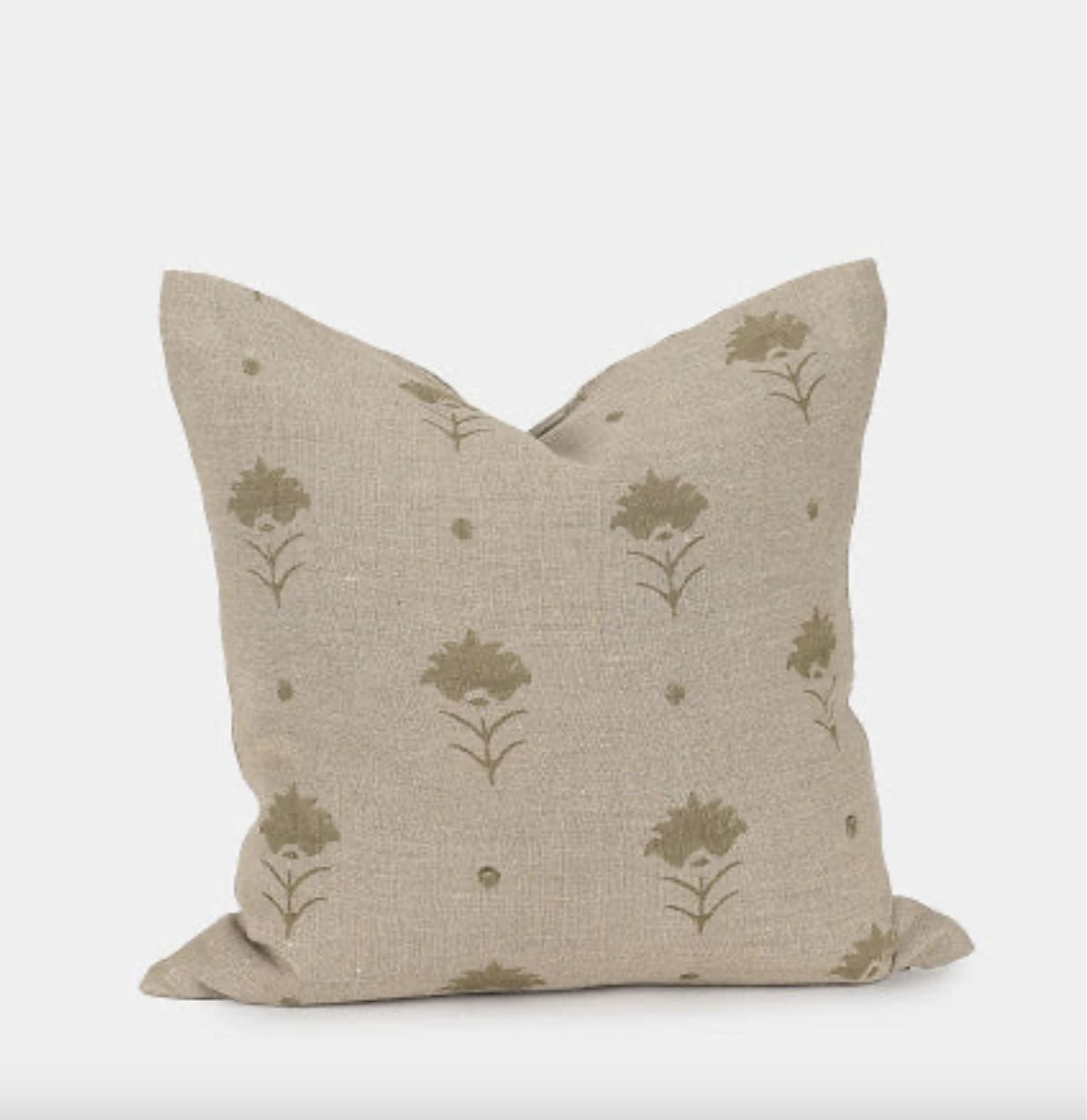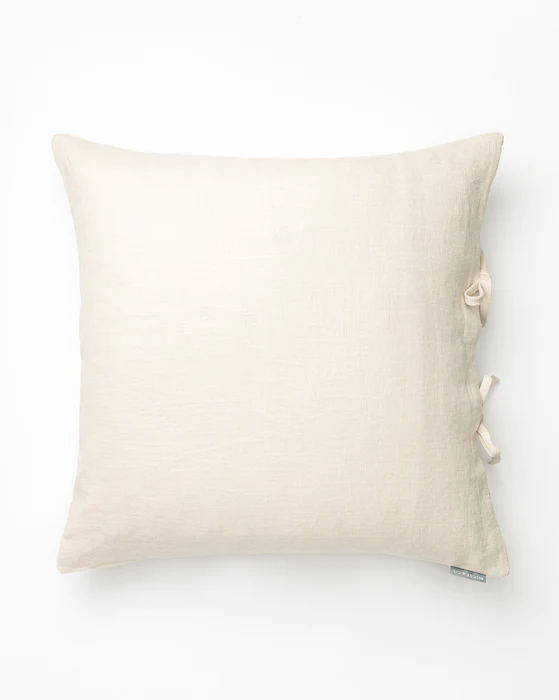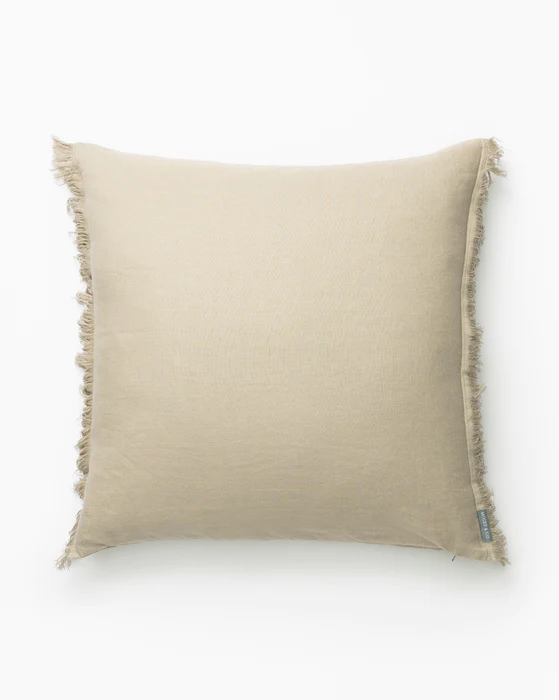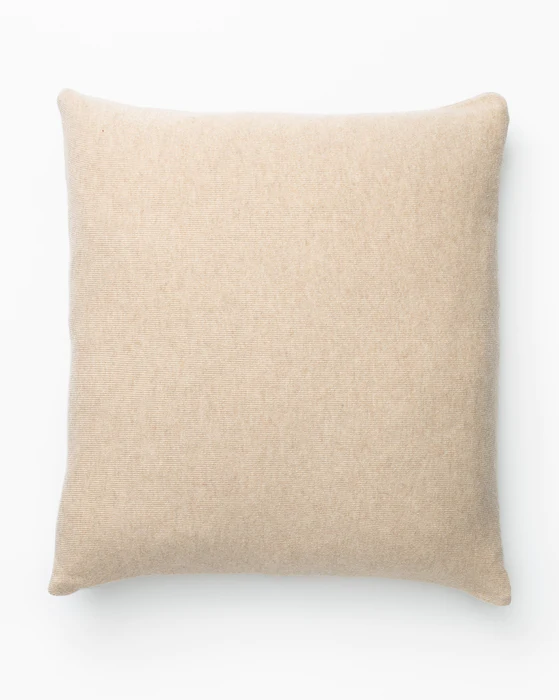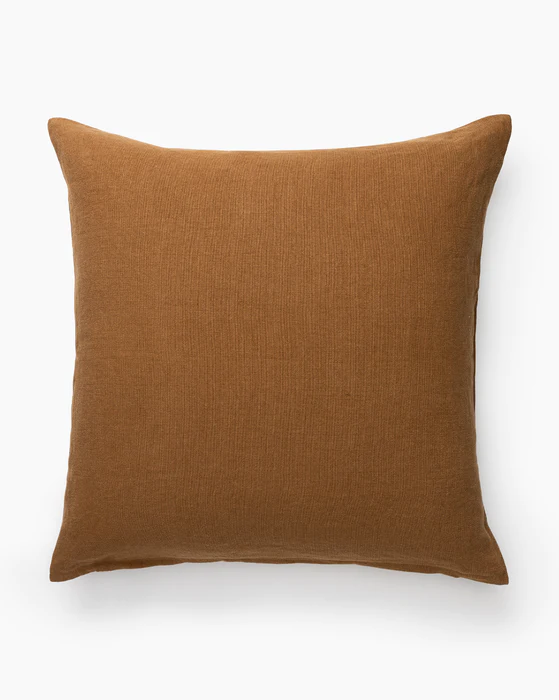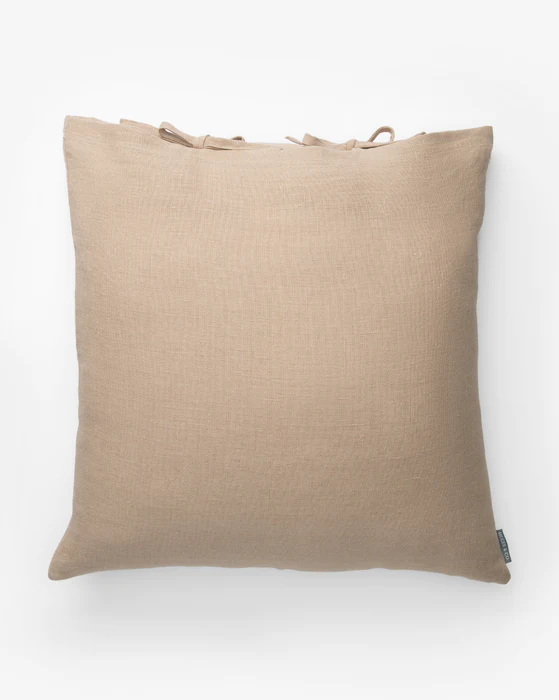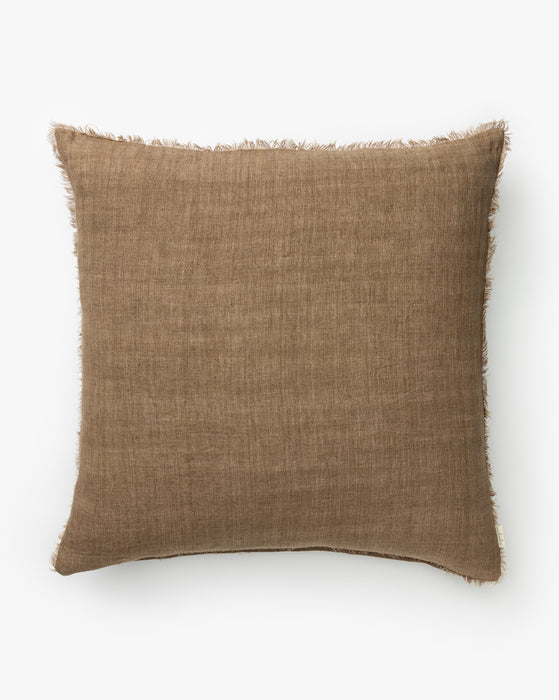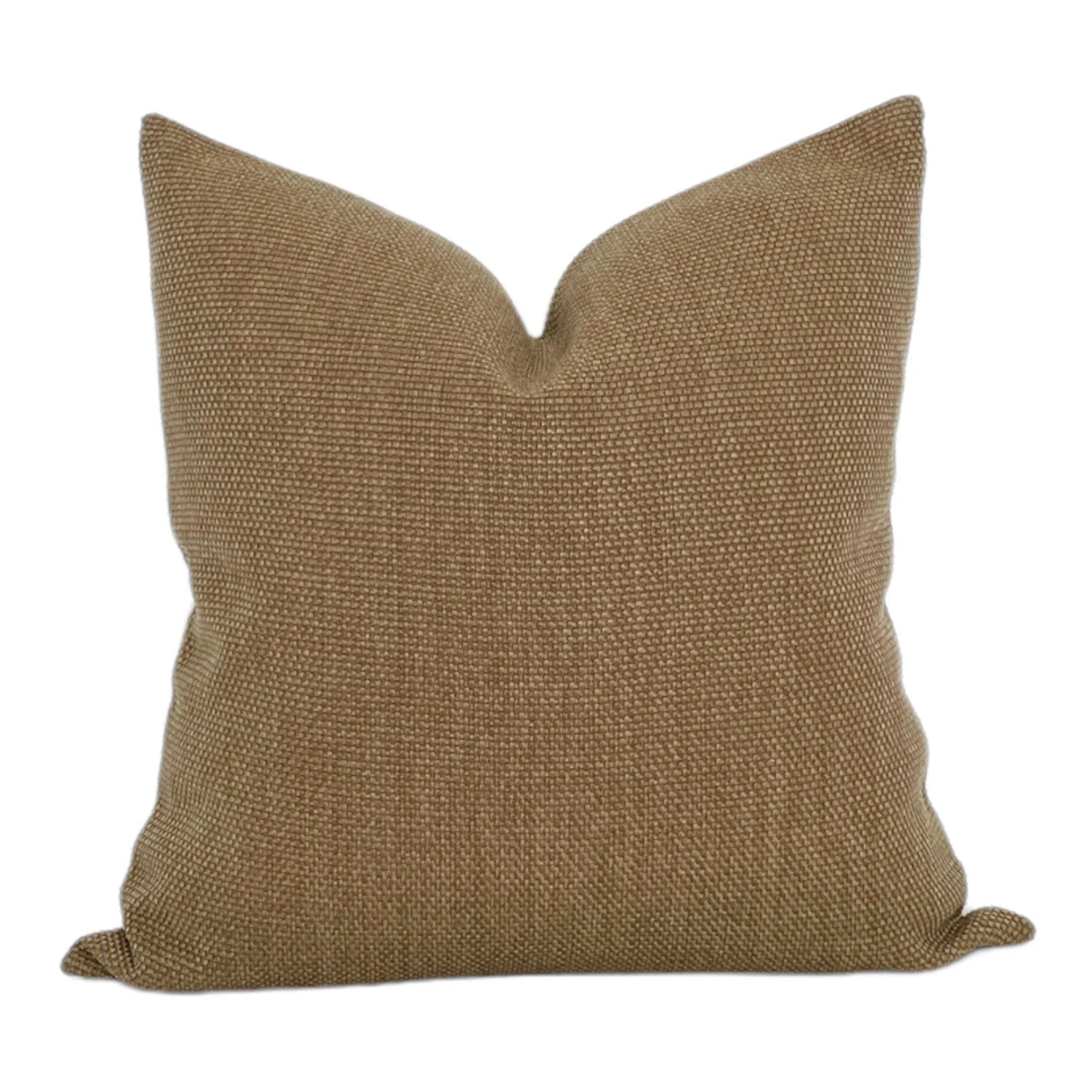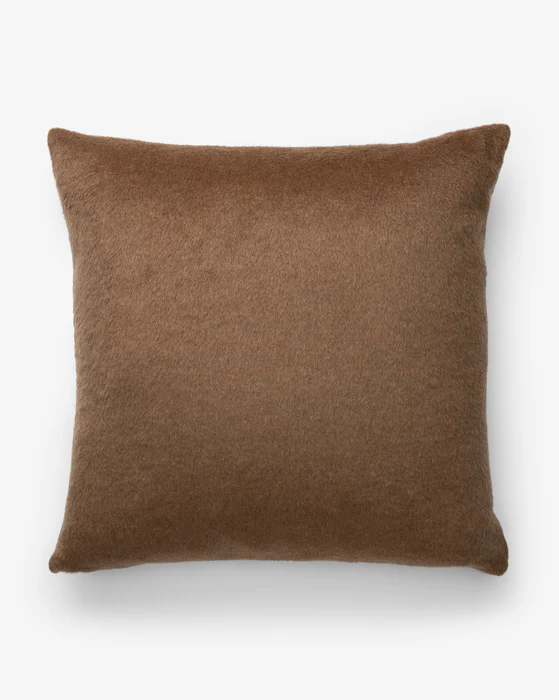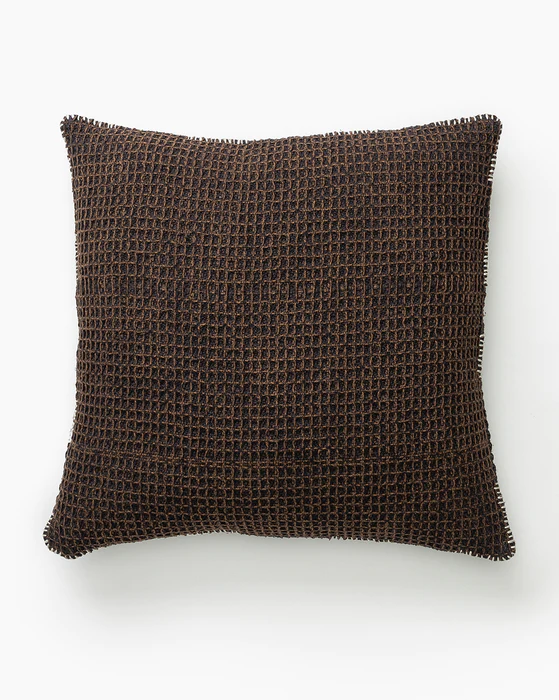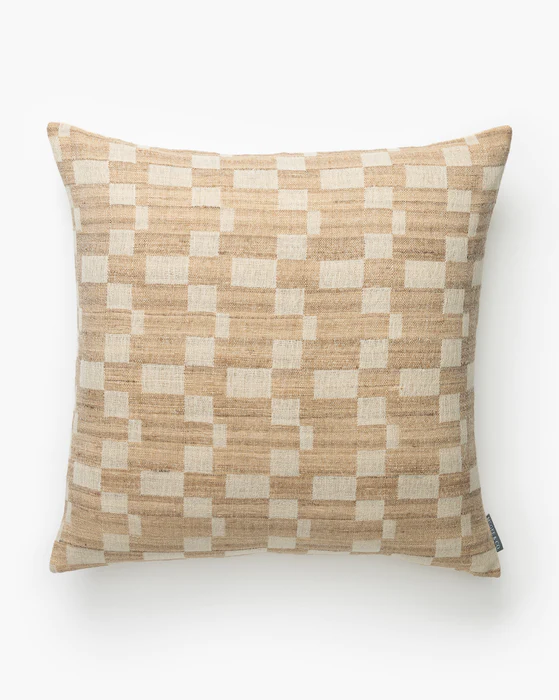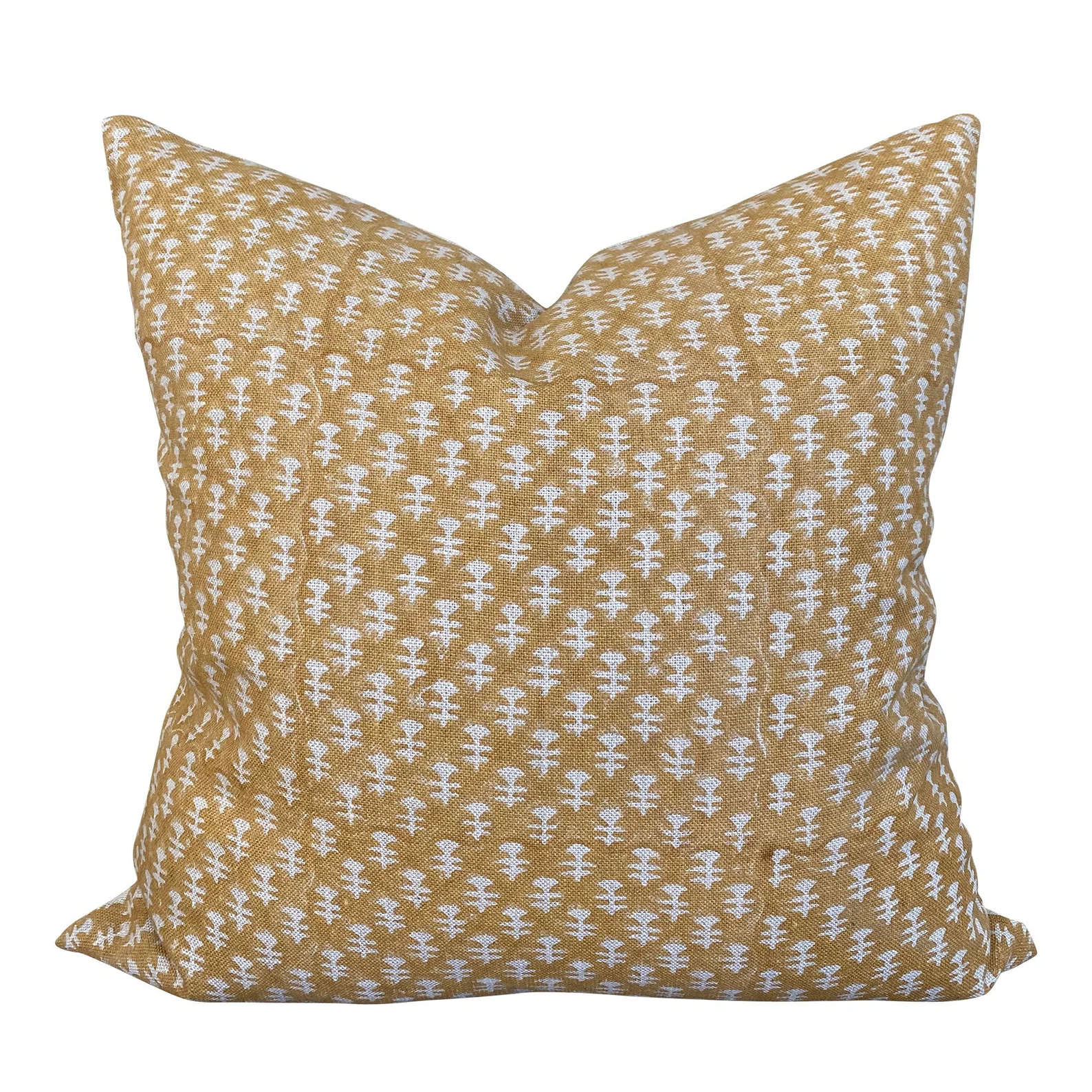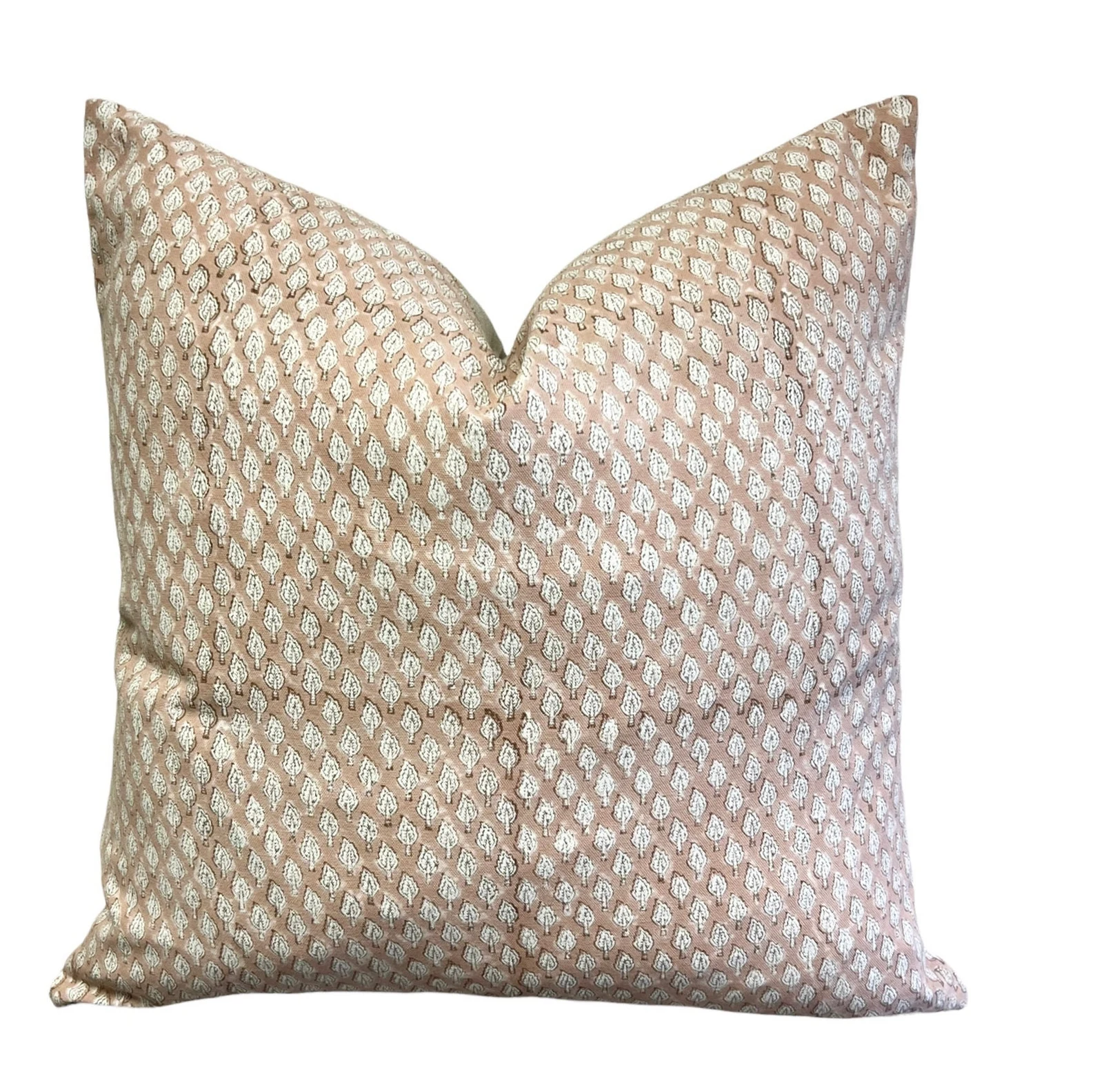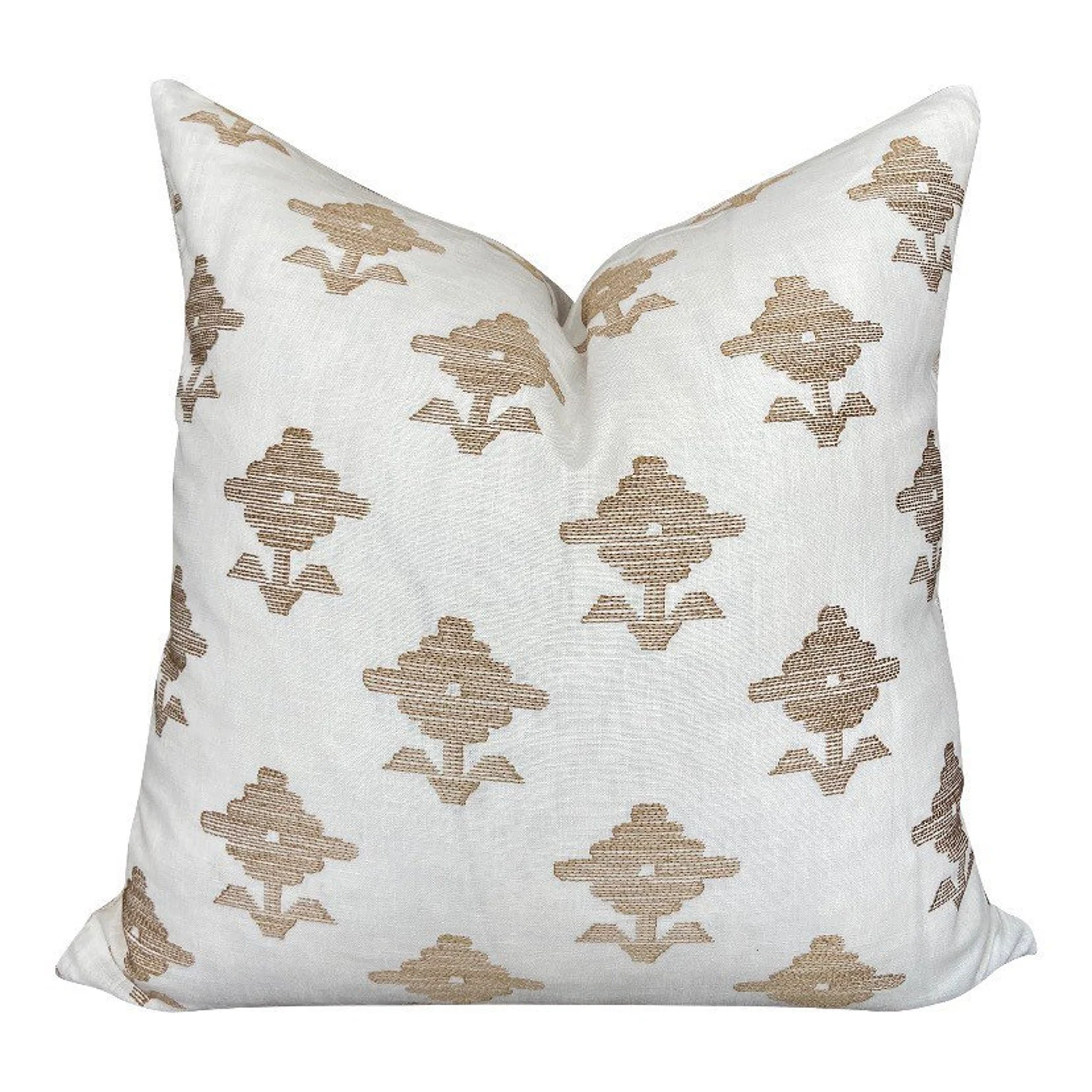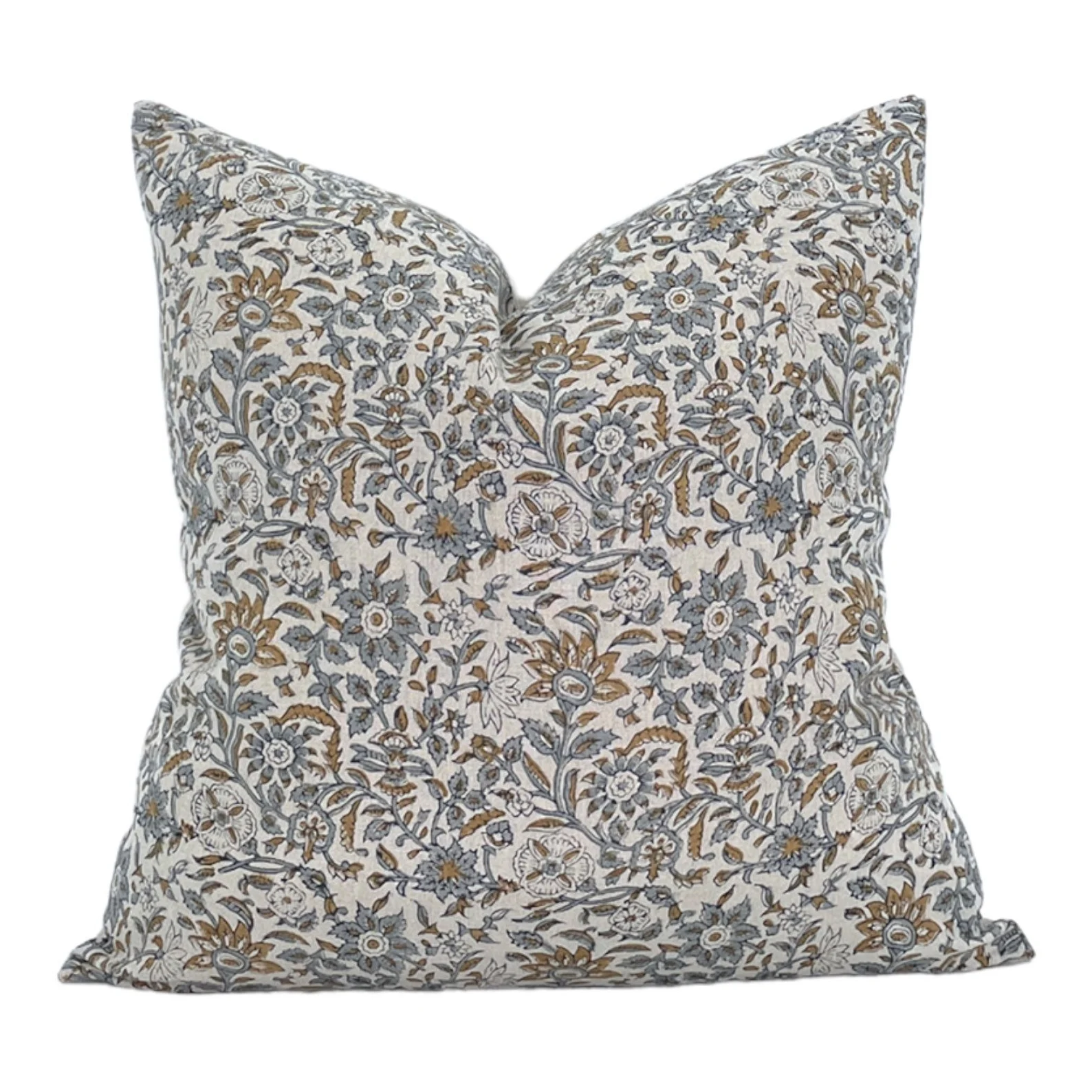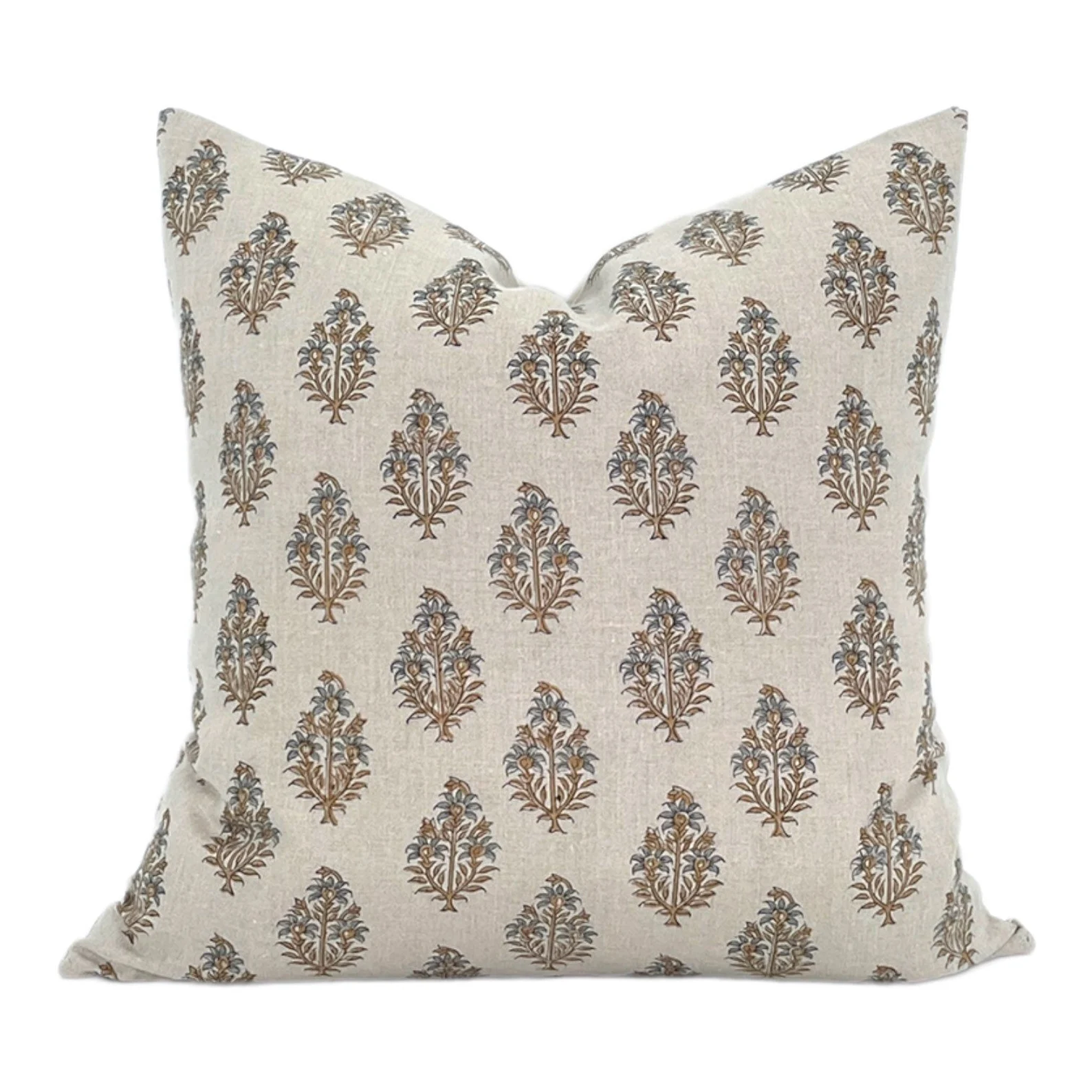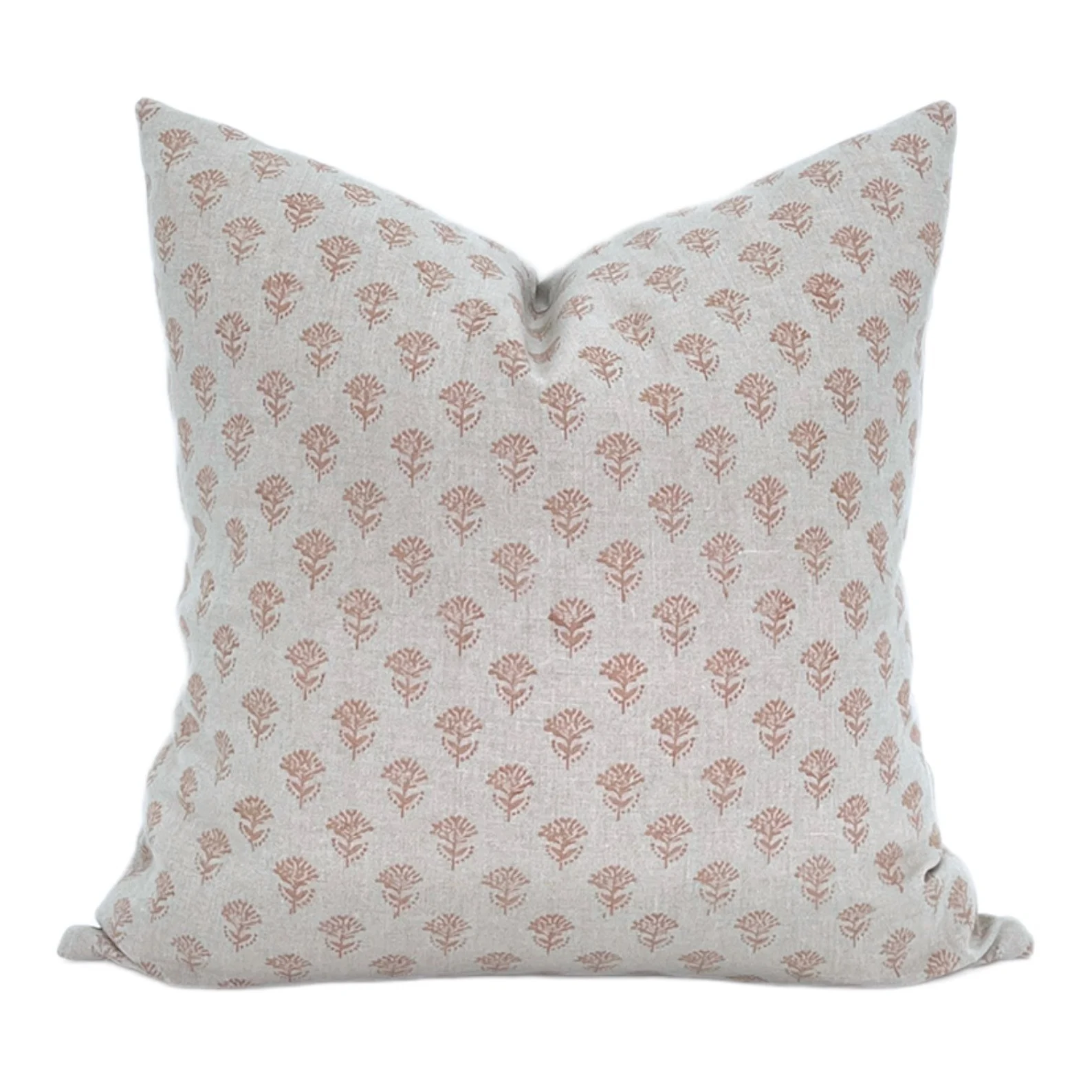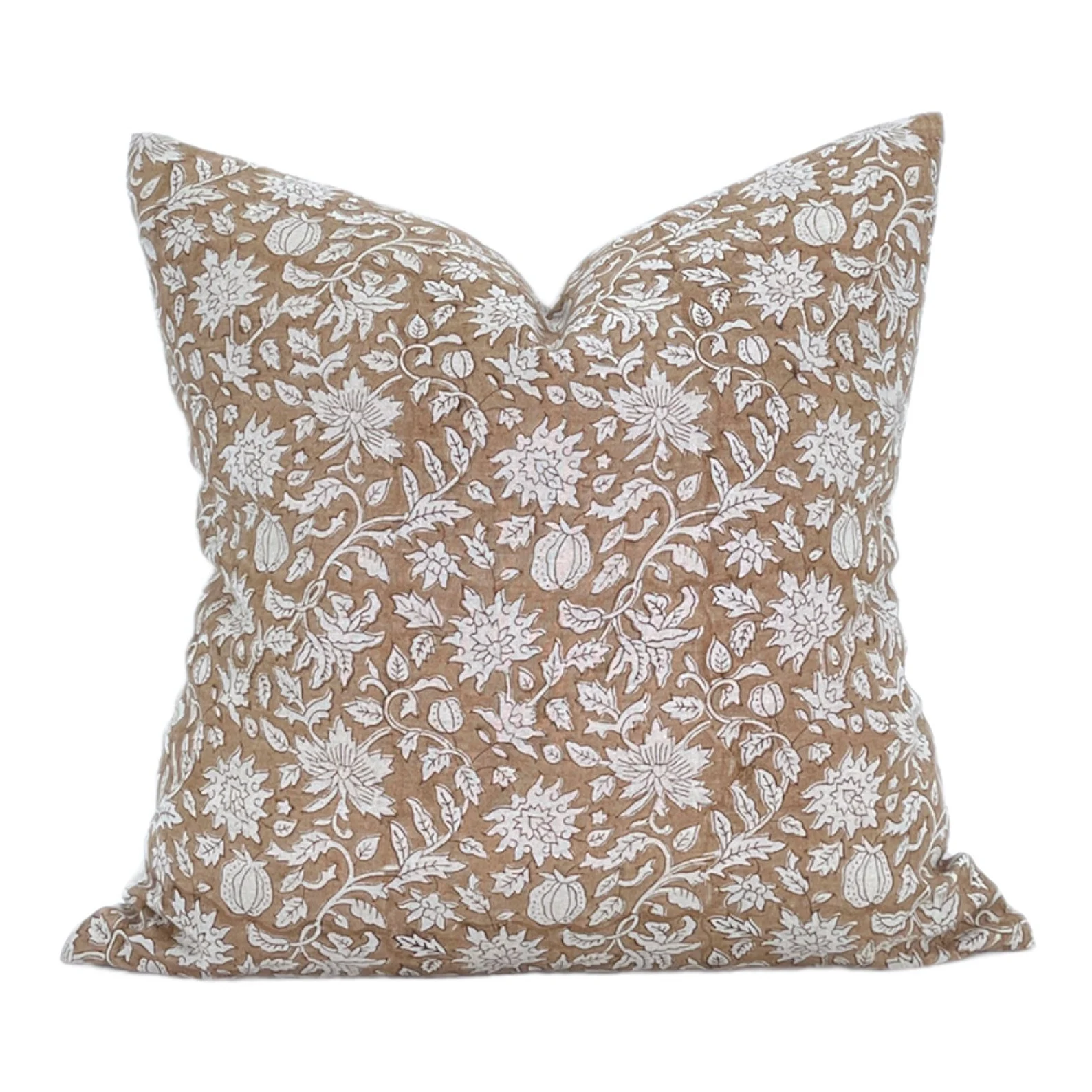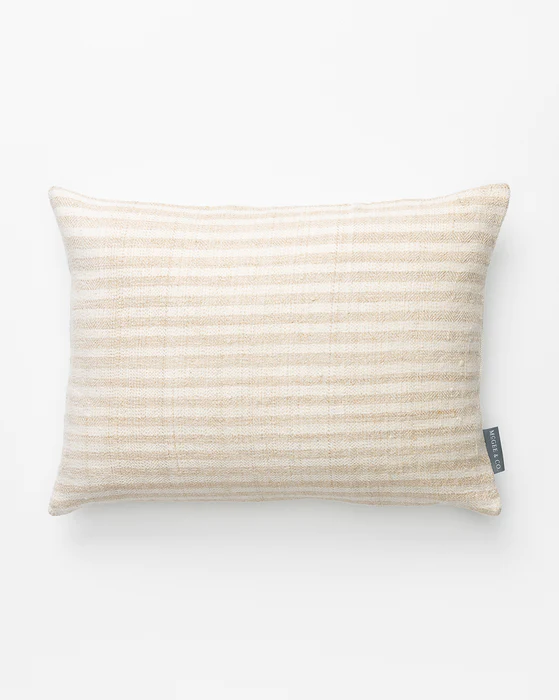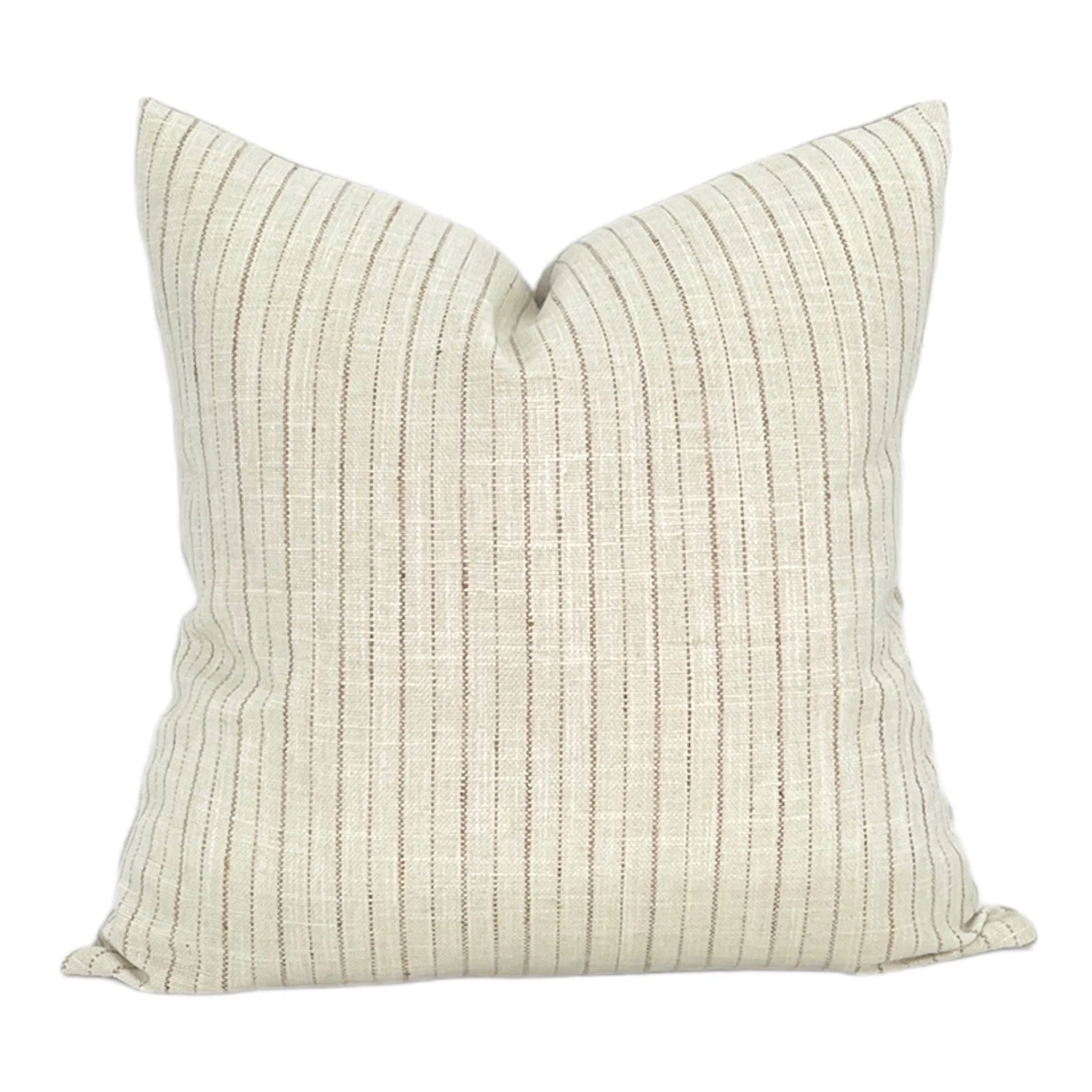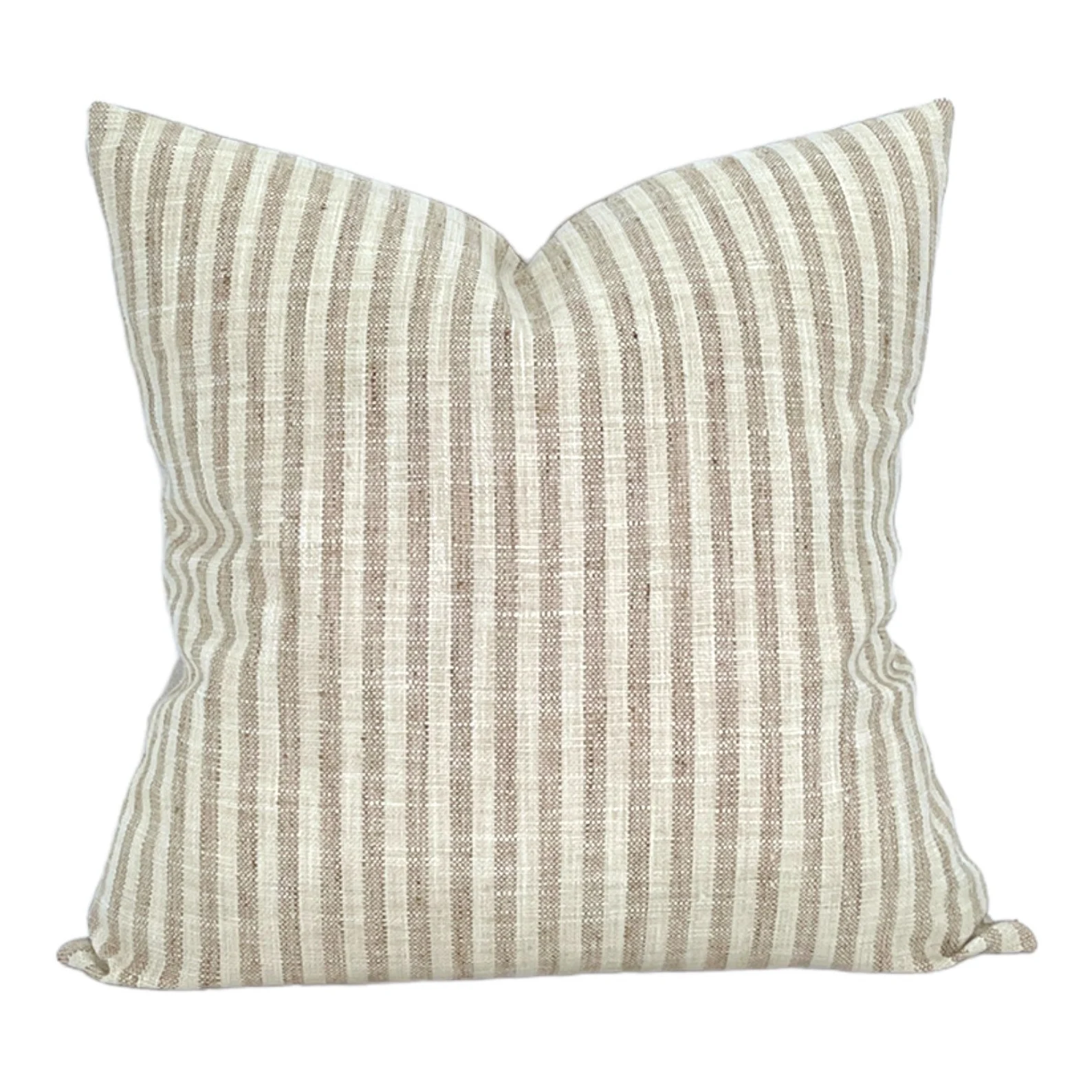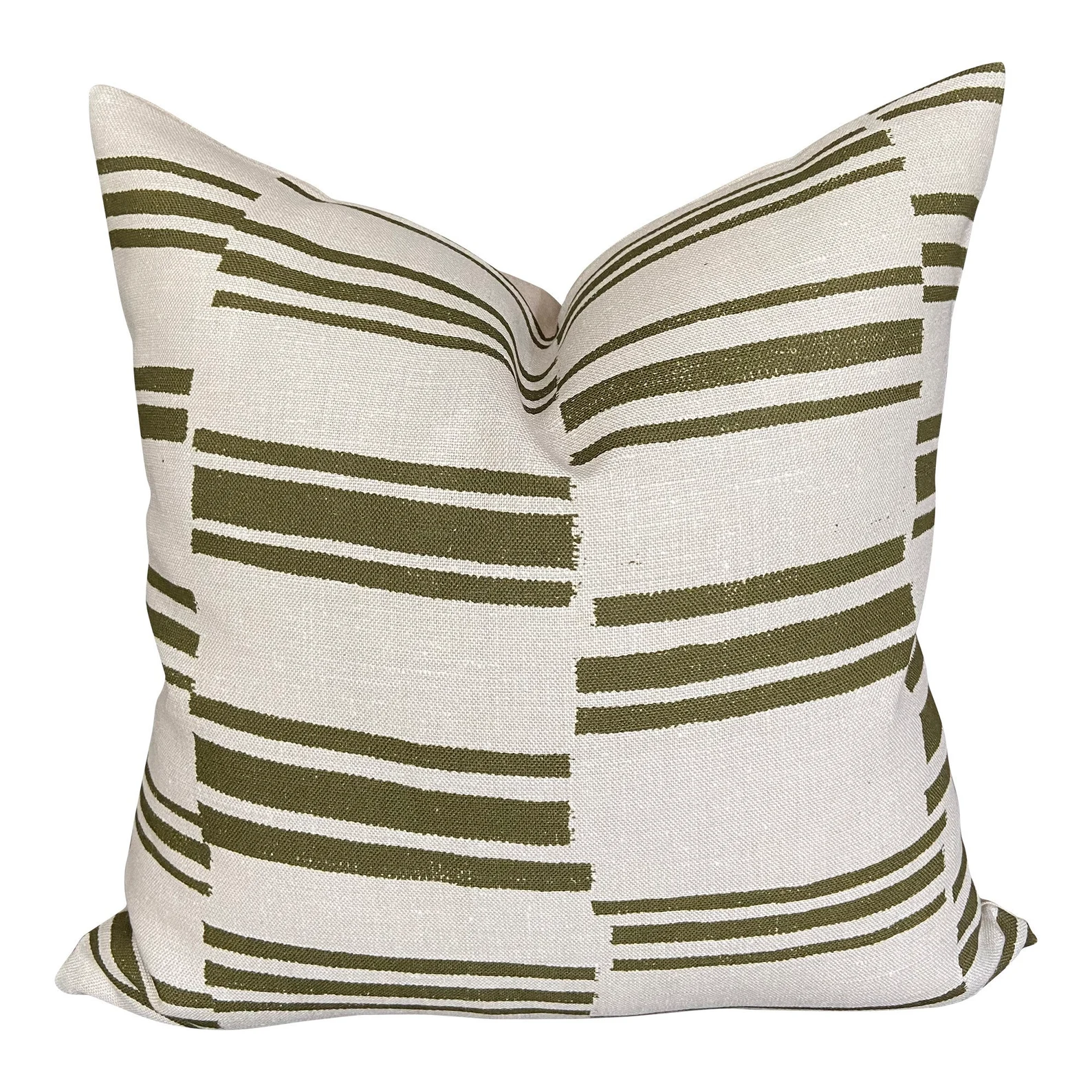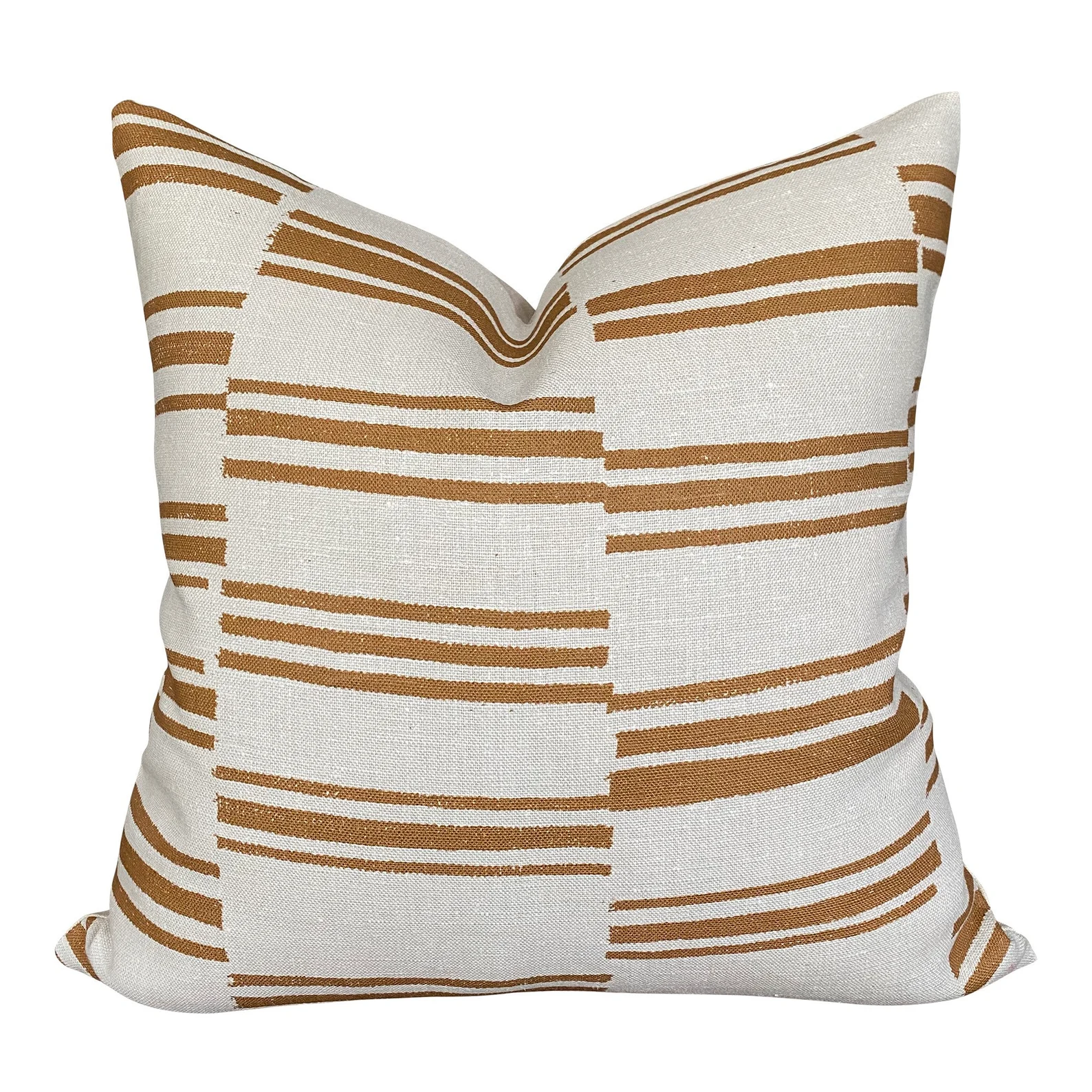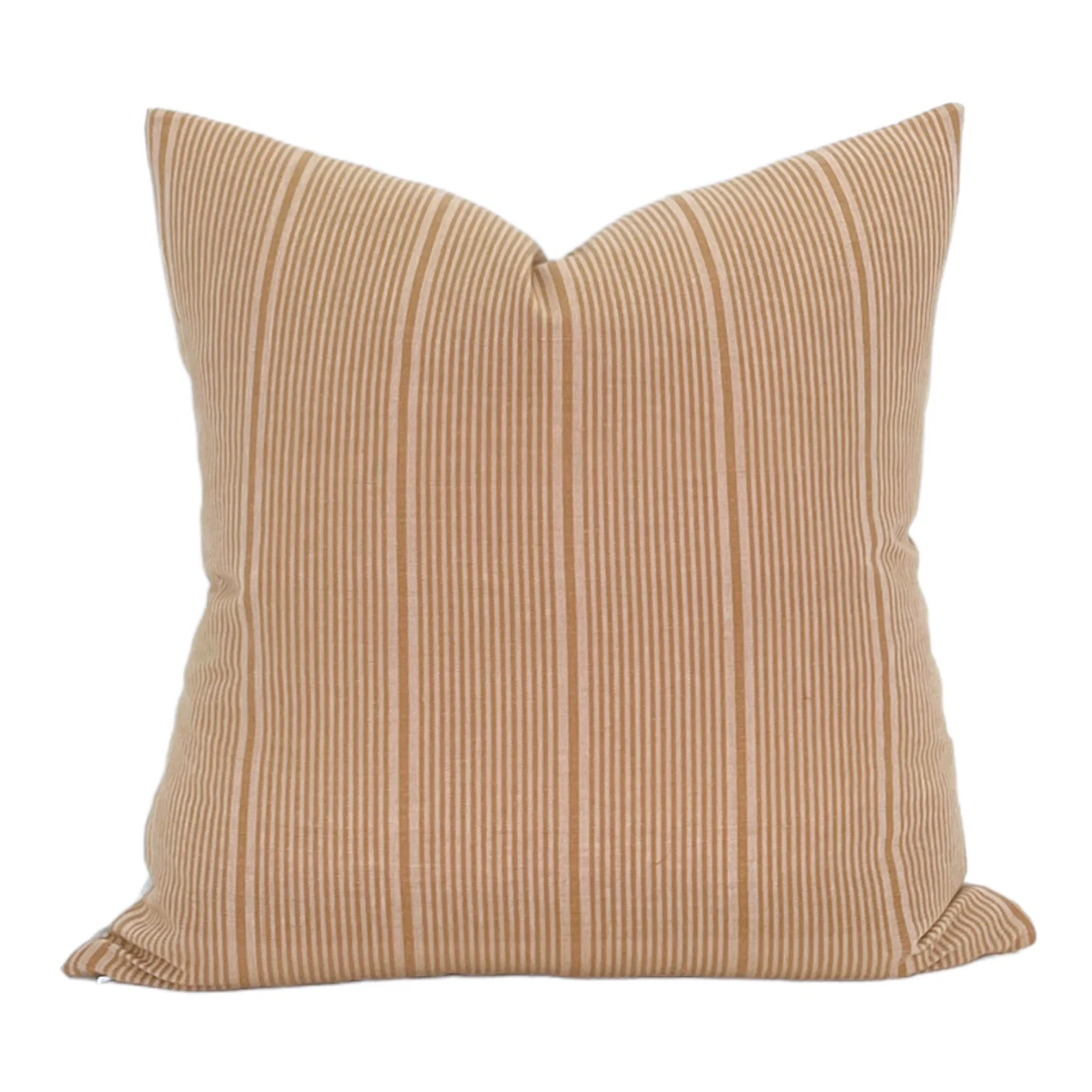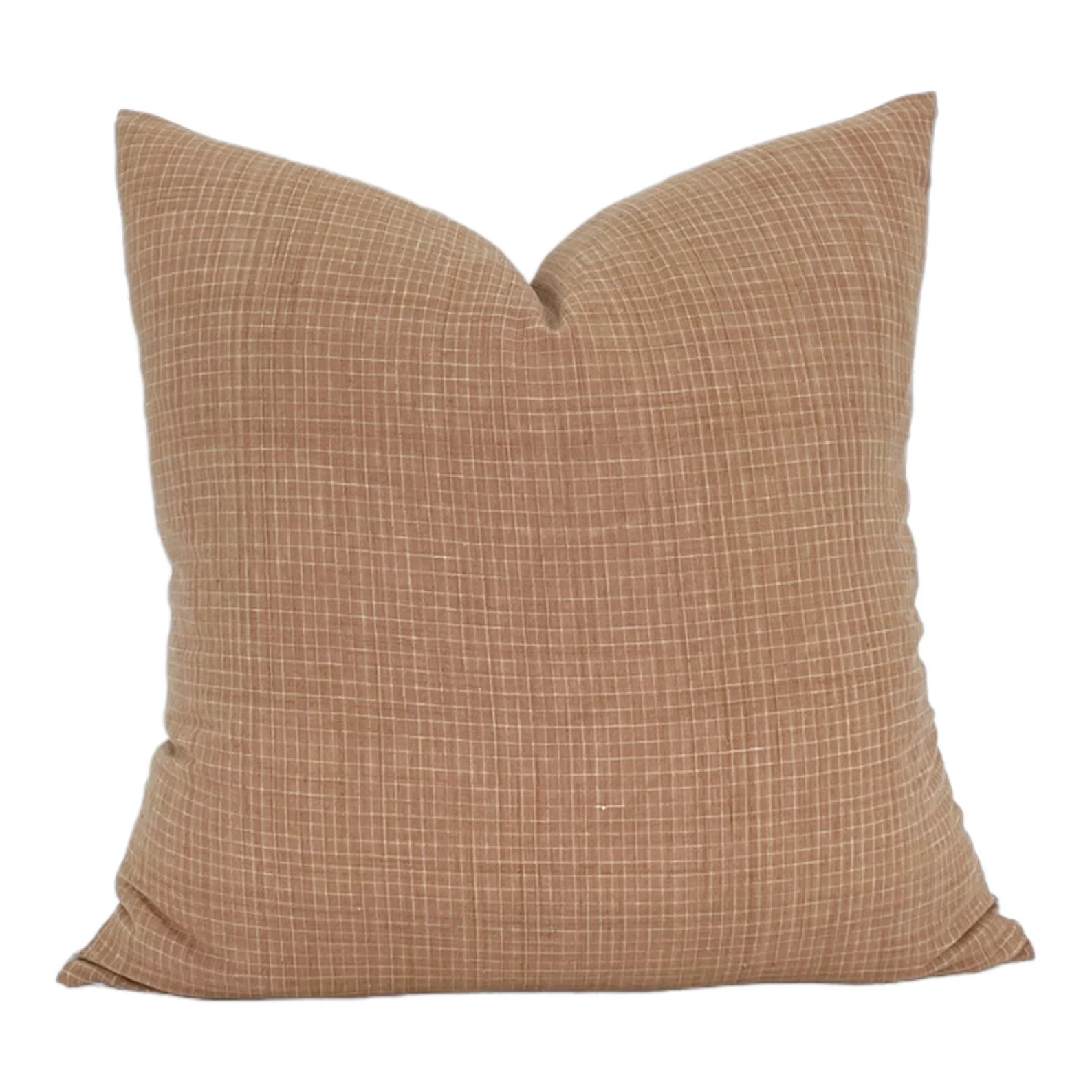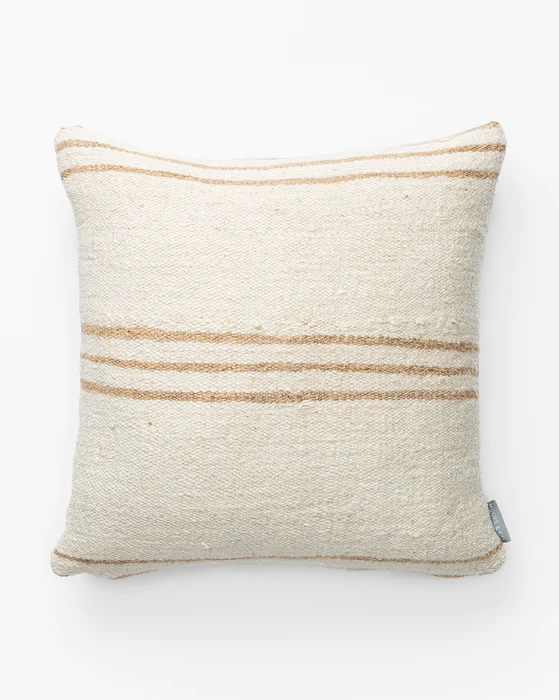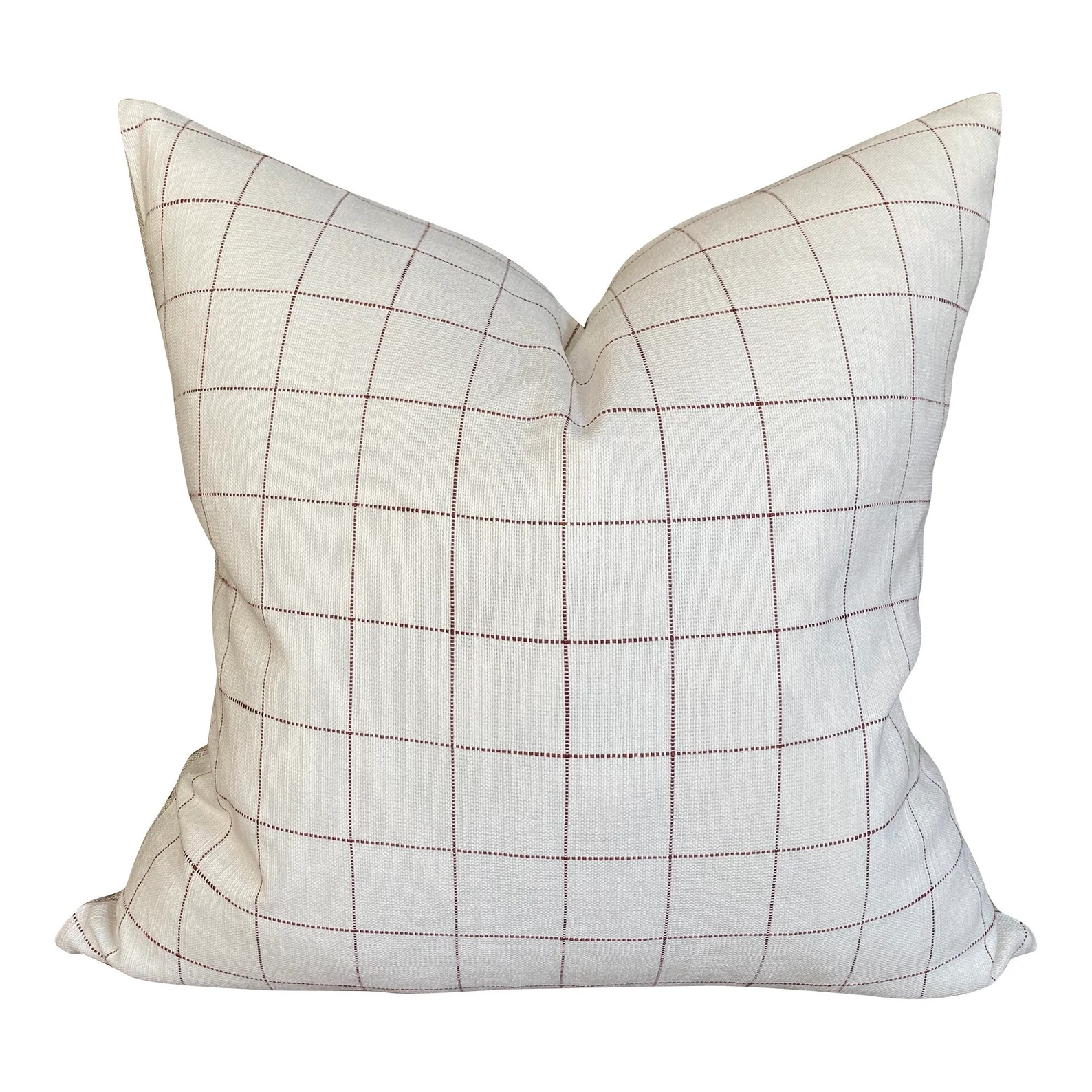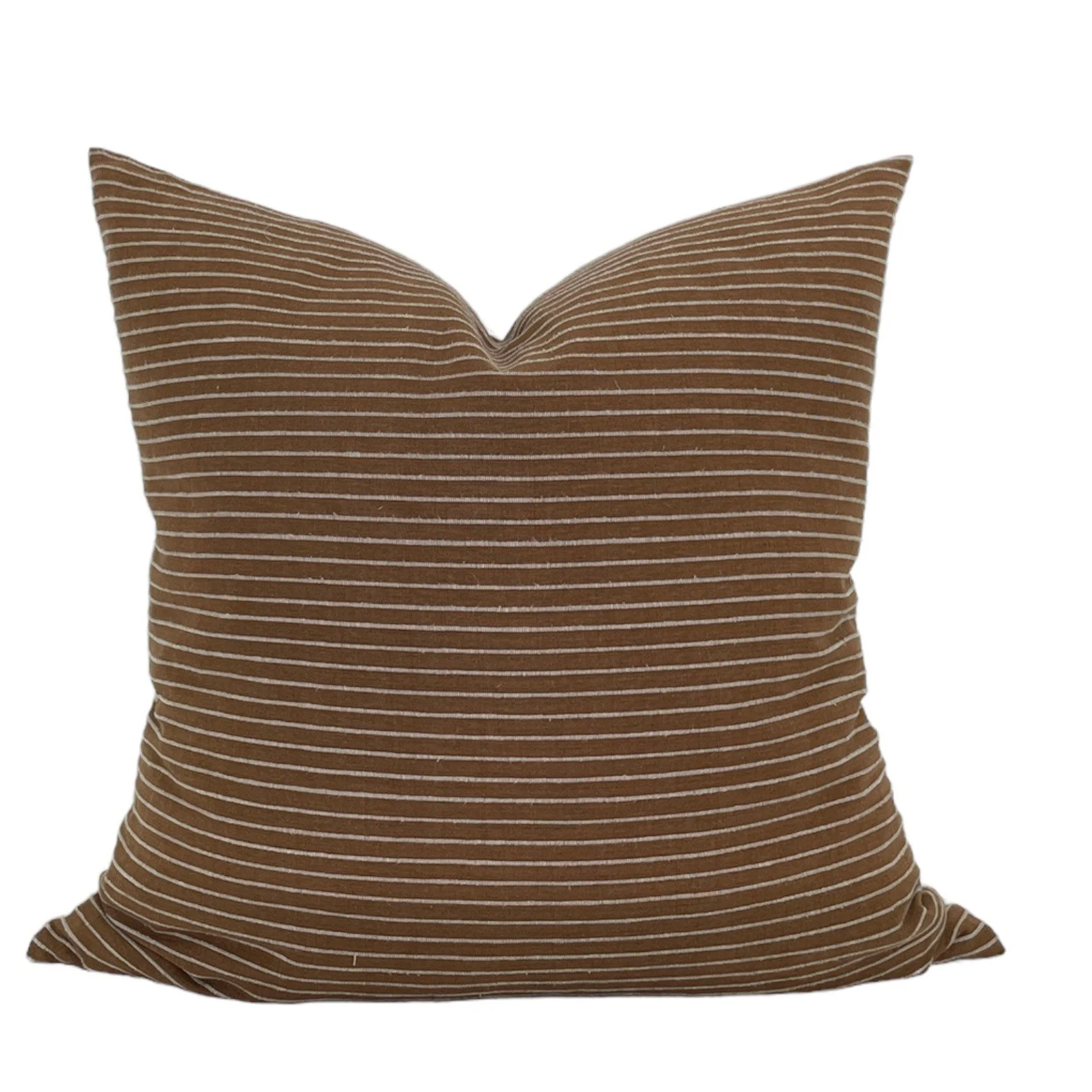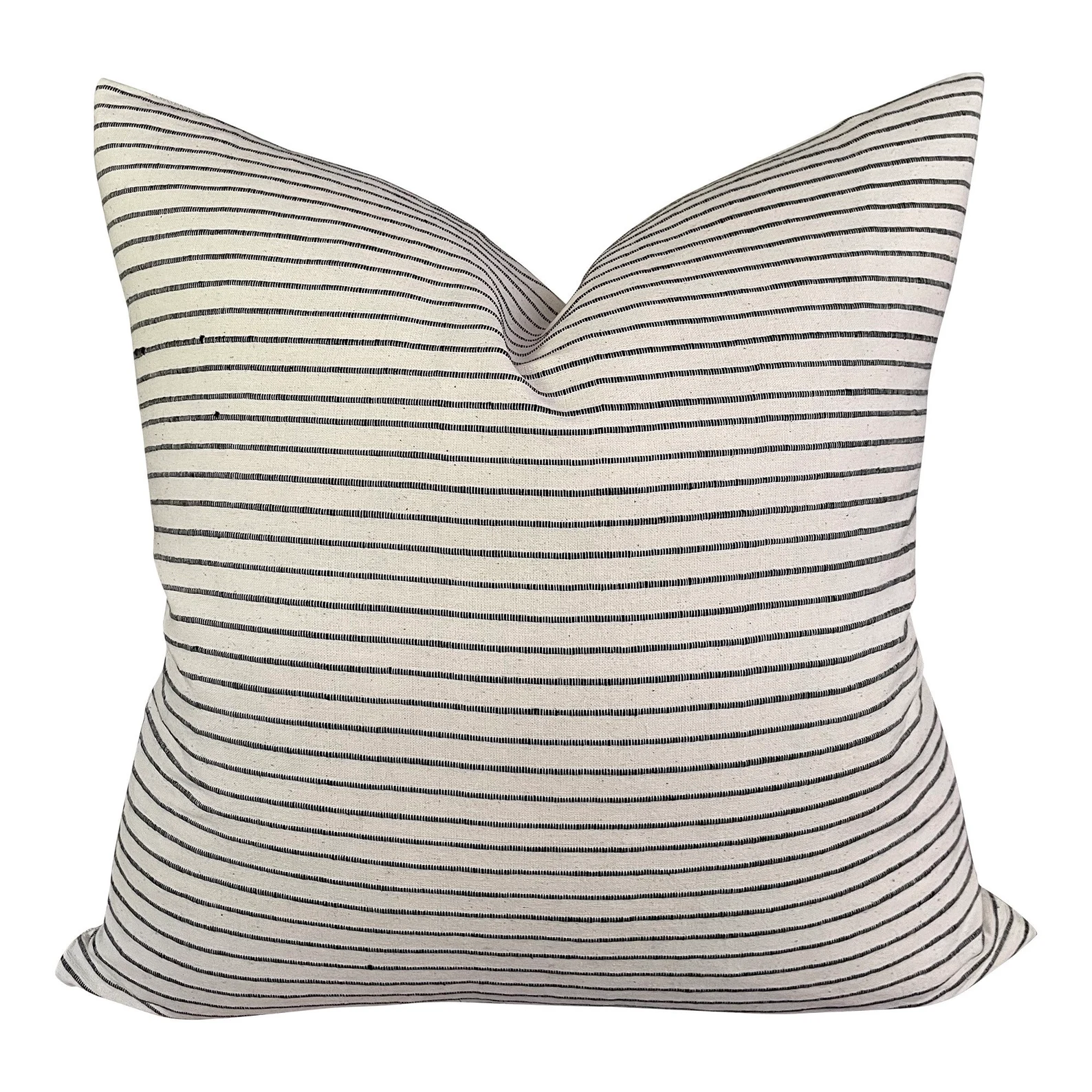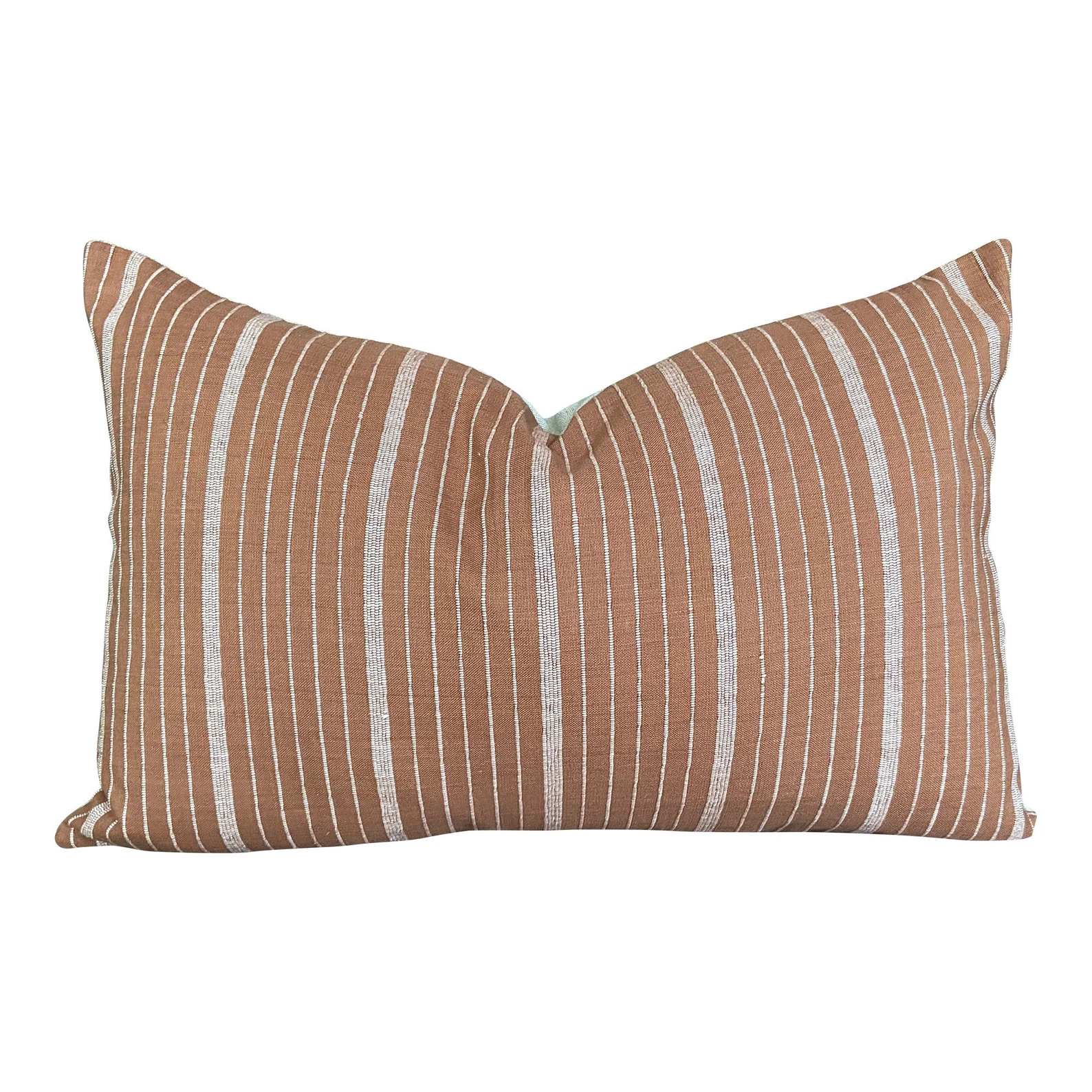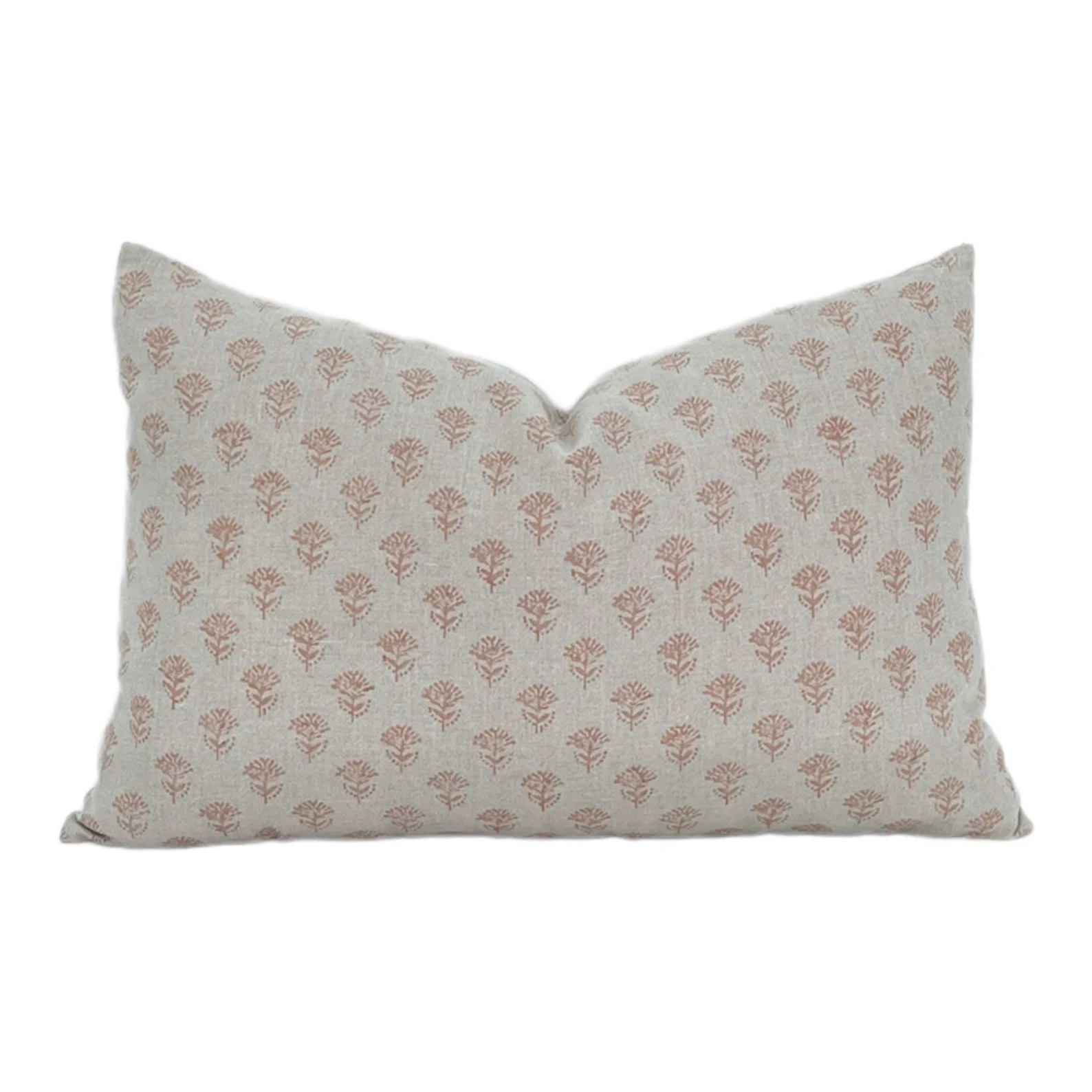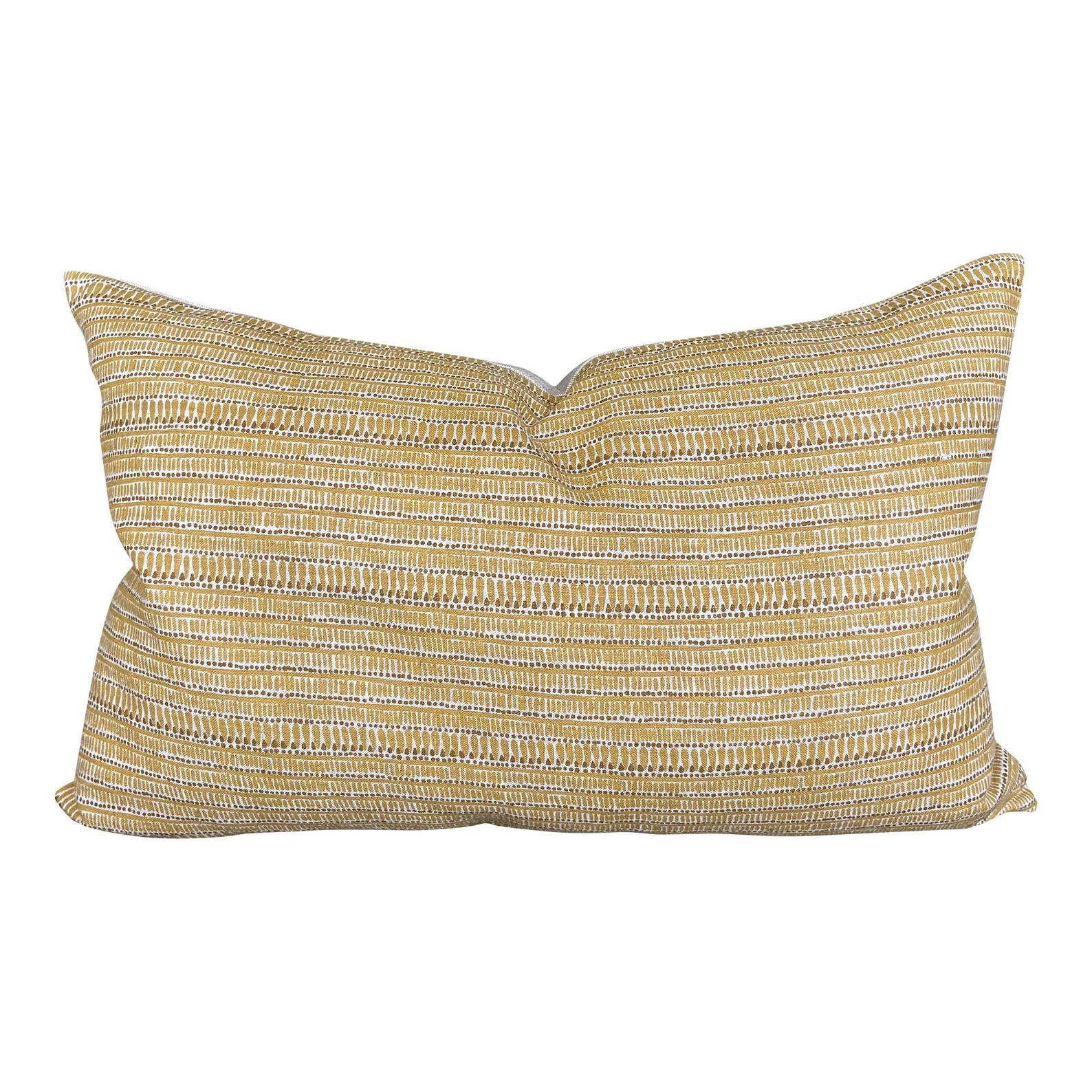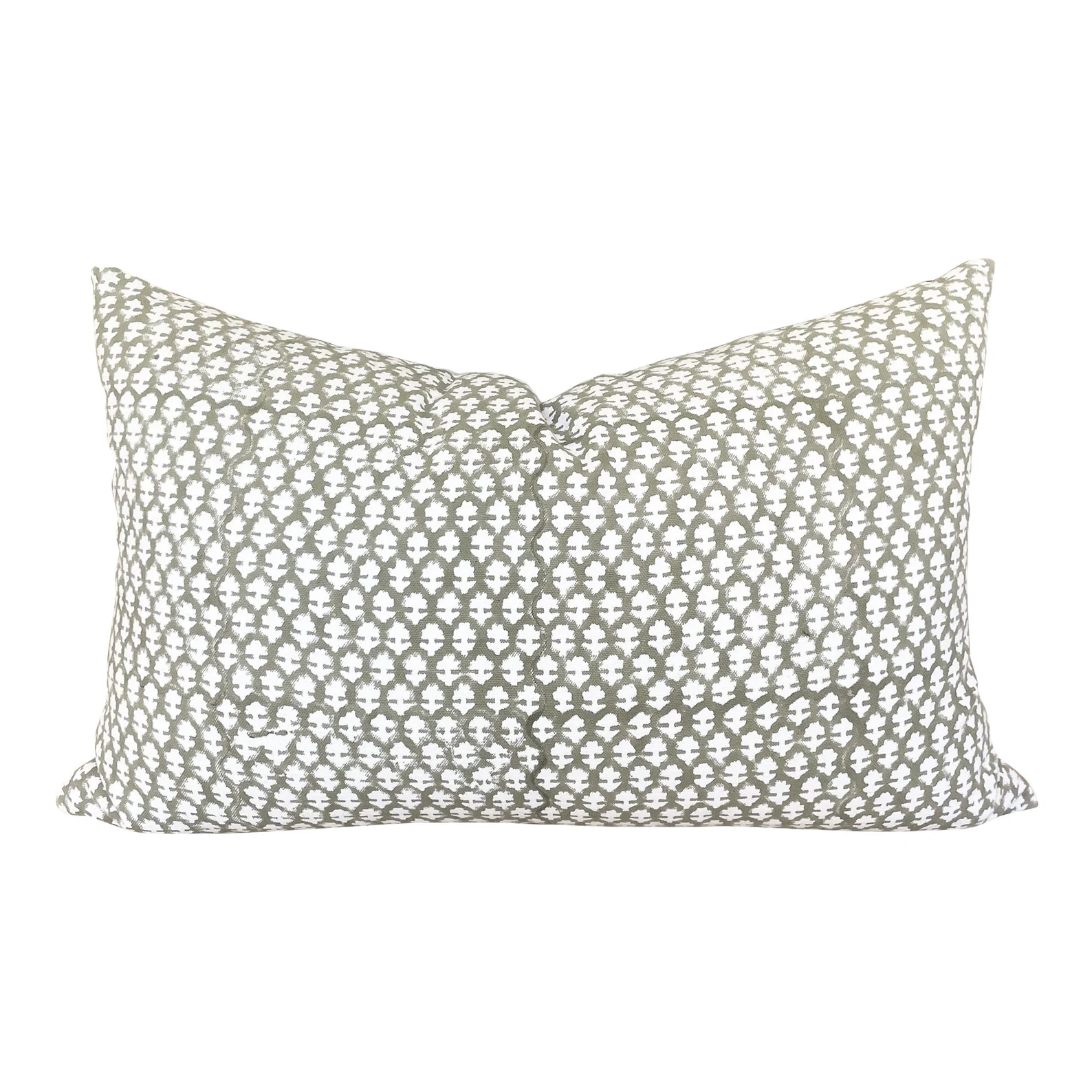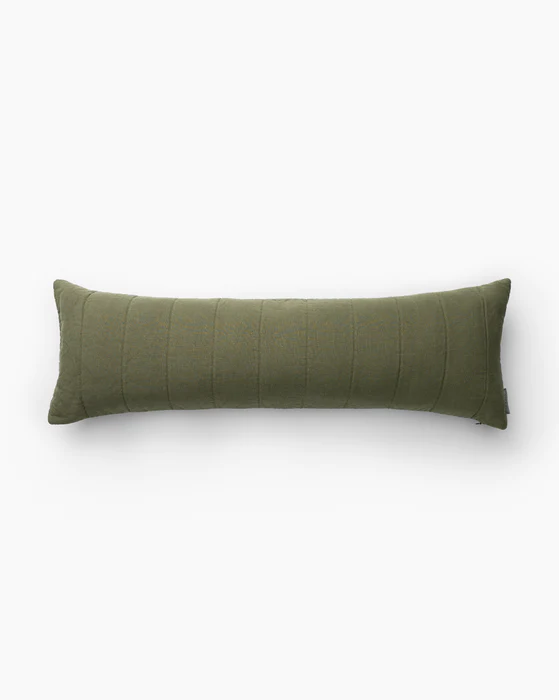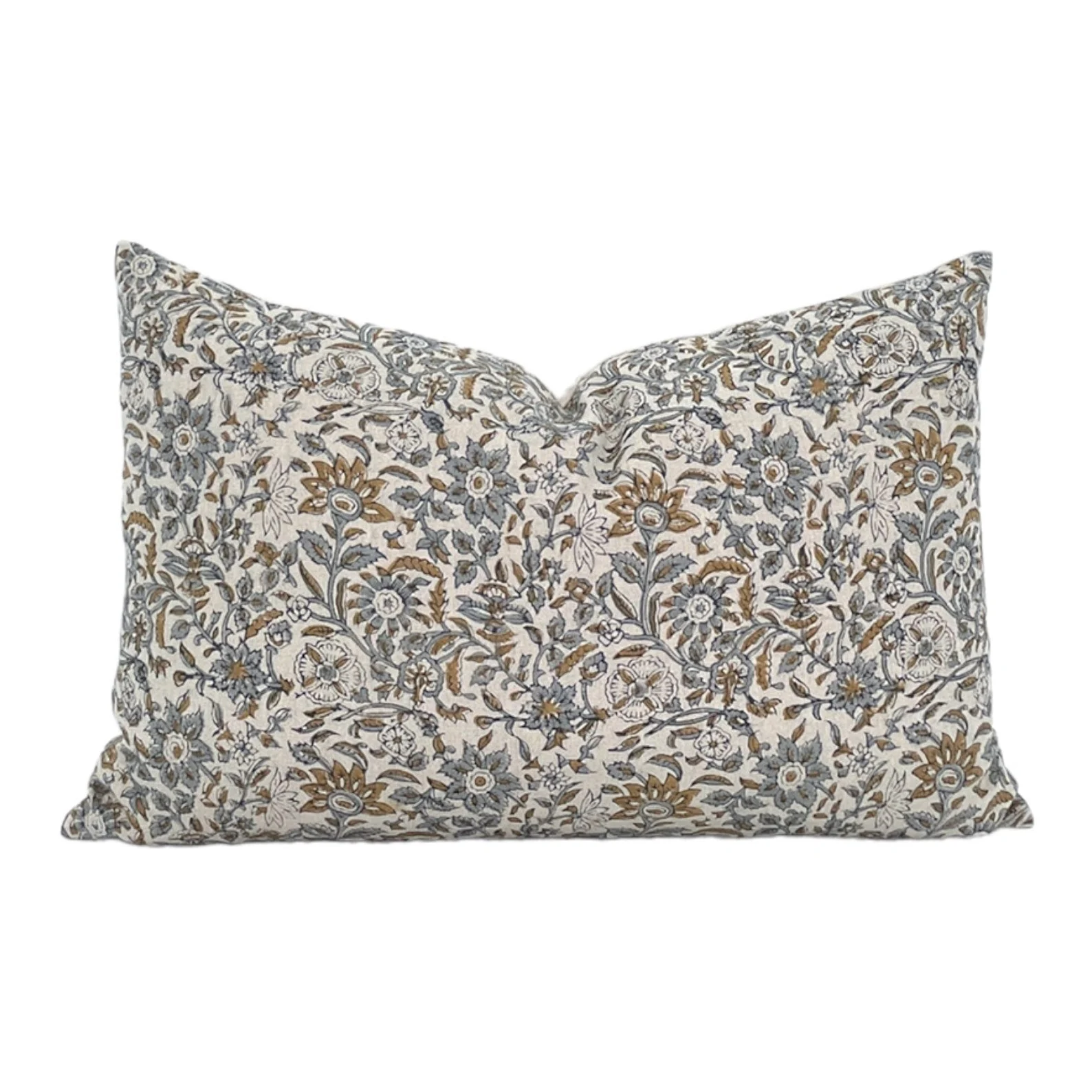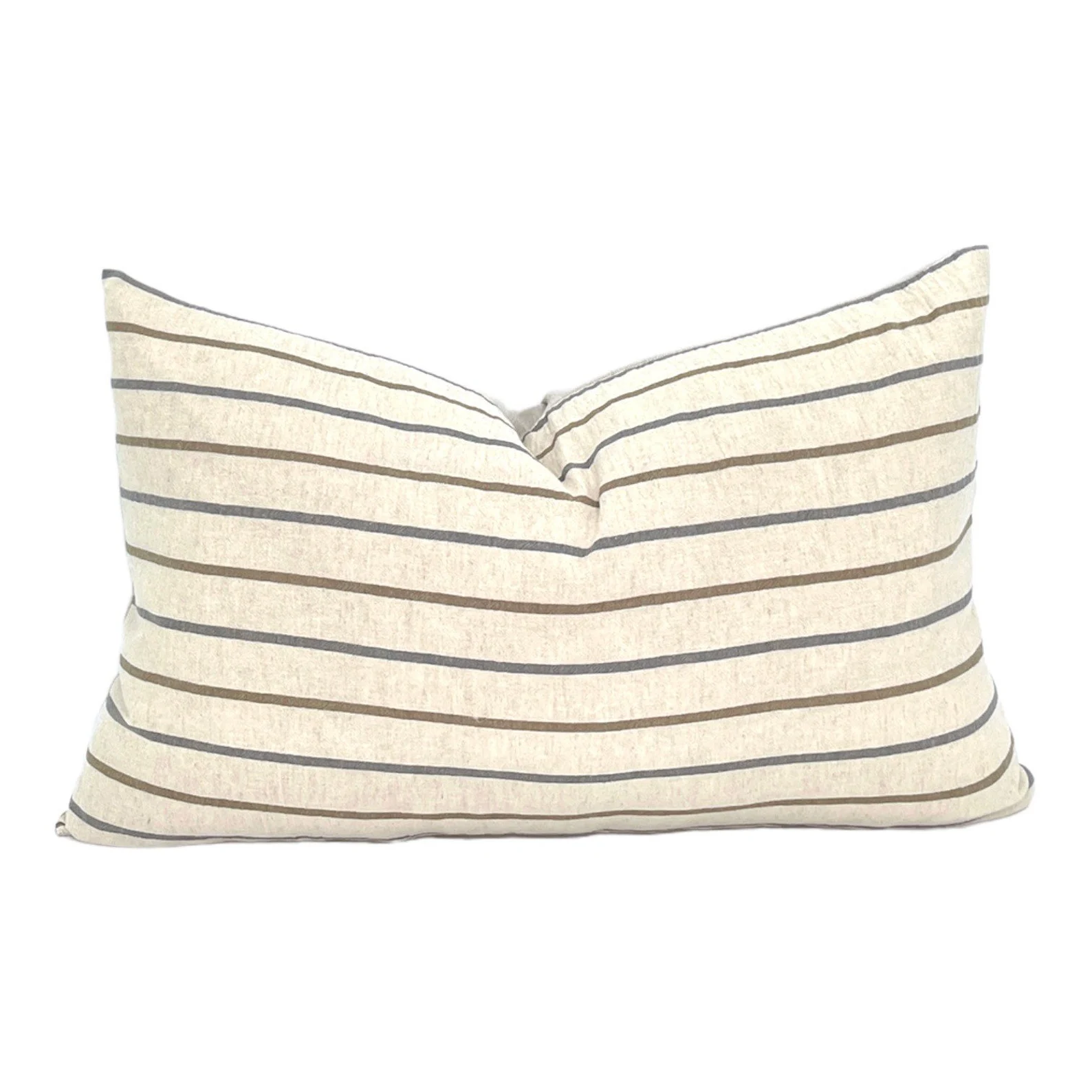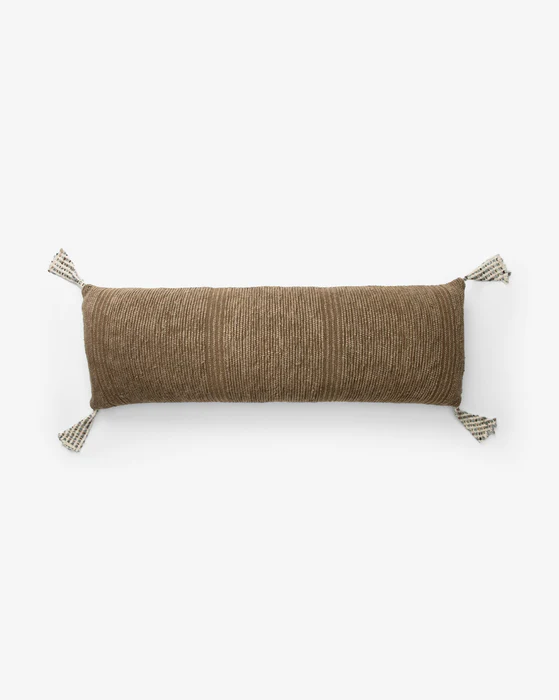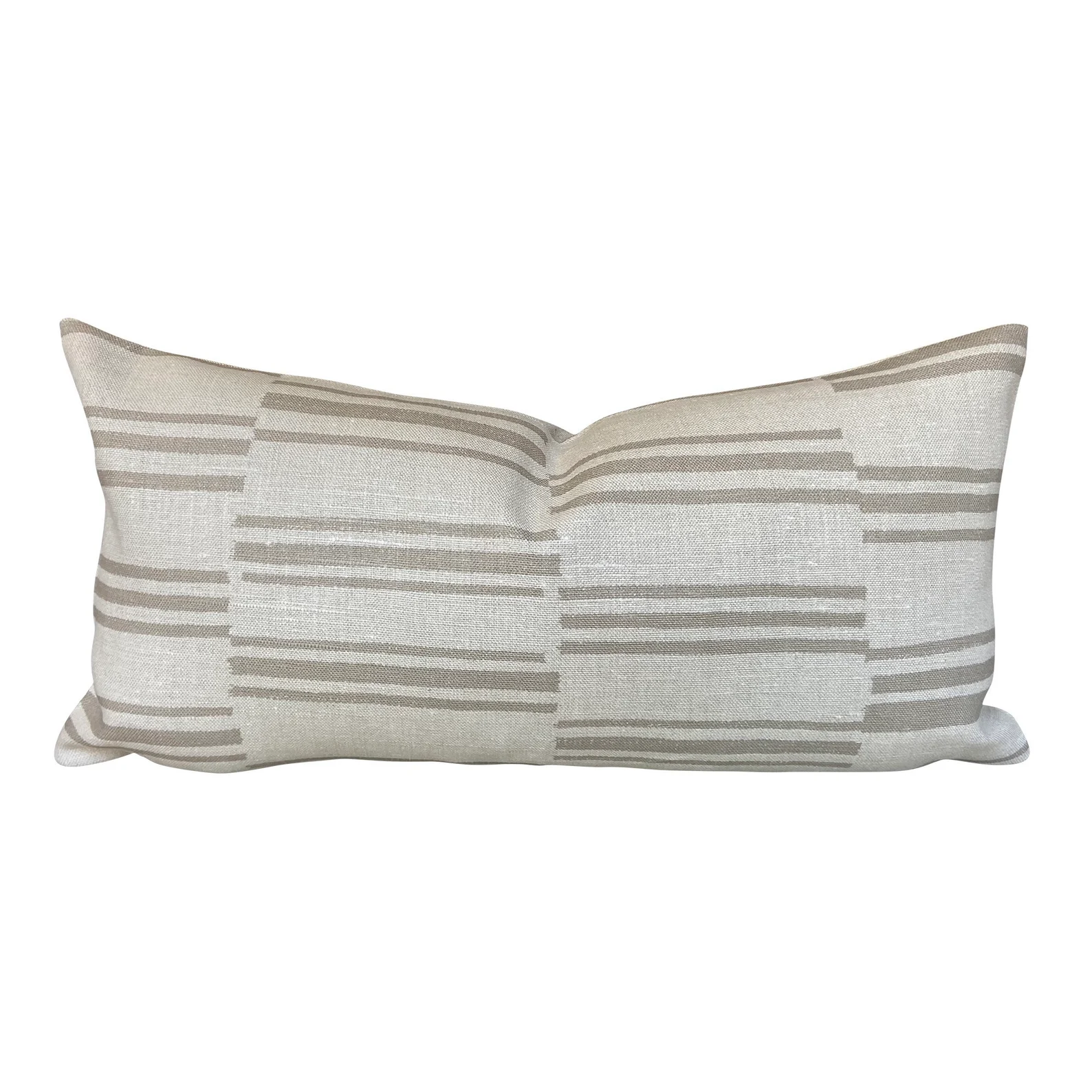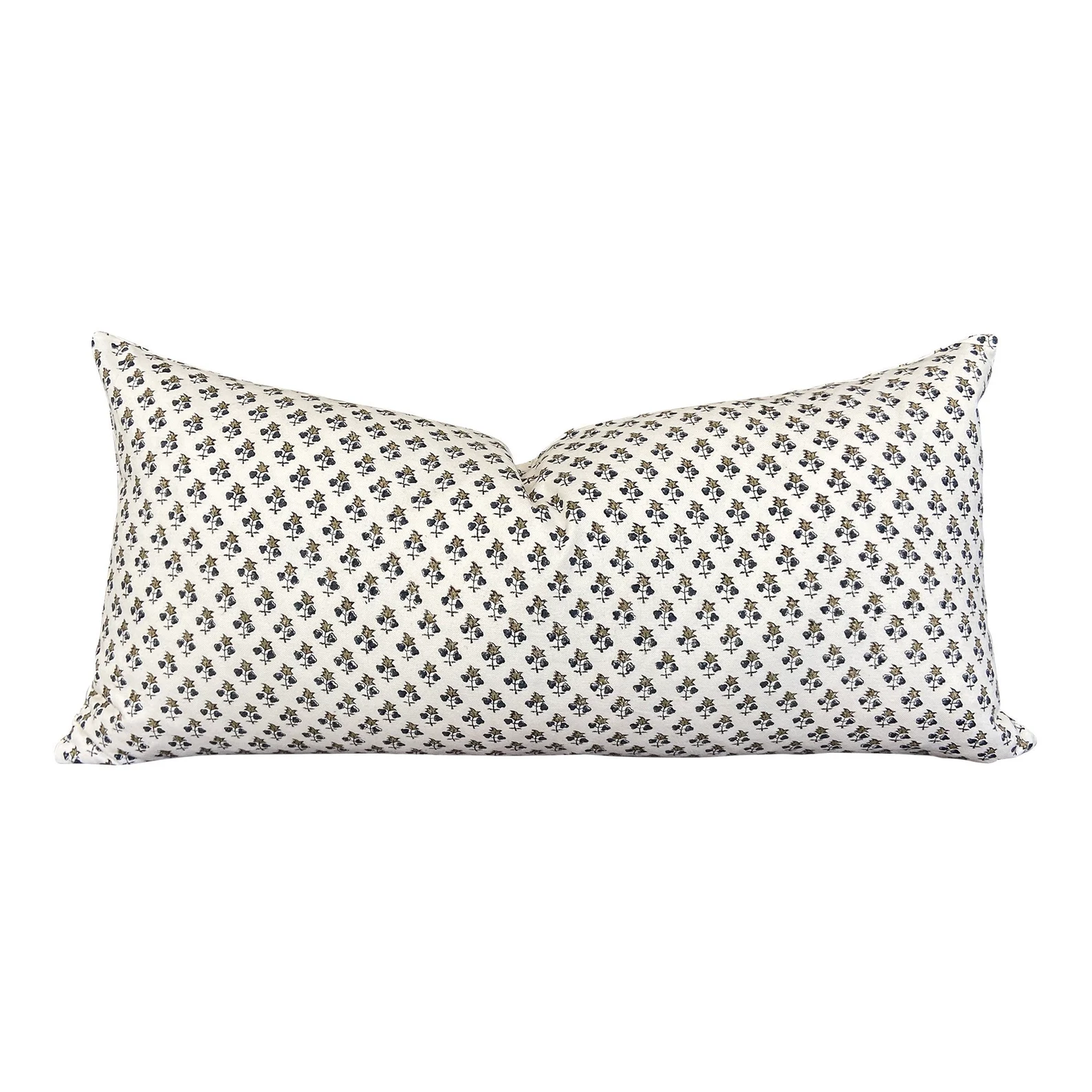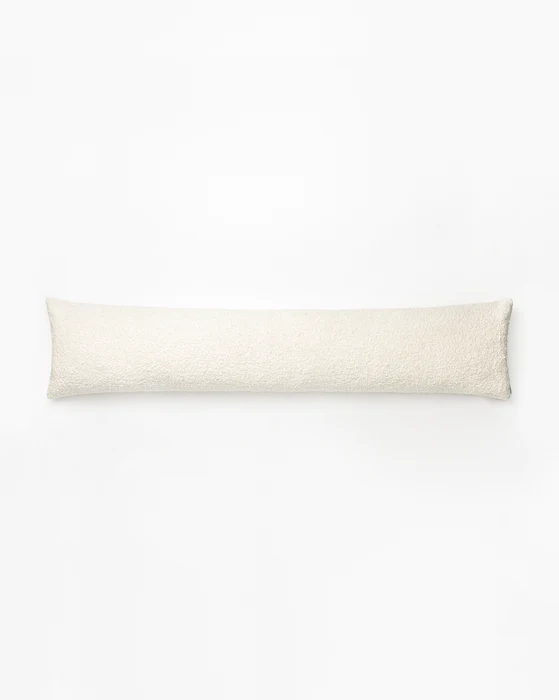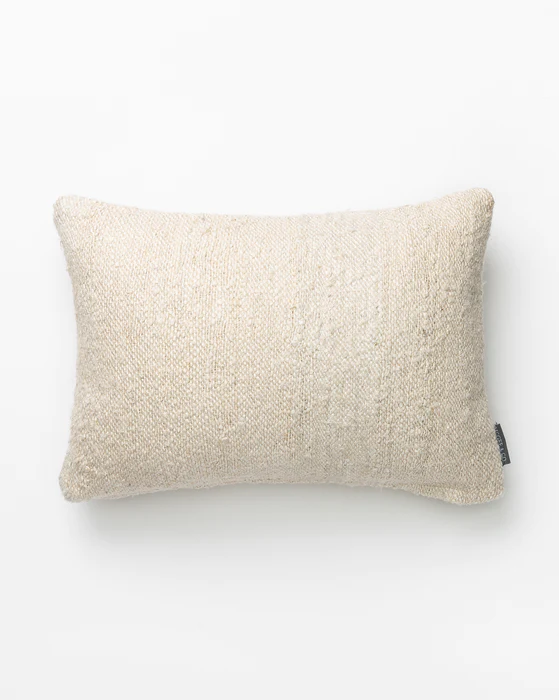Our Guide to Pillows
How to select and style pillows in your space: a step-by-step guide.
Everything home is our love language, and pillows are no different.
When done right, throw pillows can bring a room to life in a powerful way. Whether you’re putting the final touches on your space or refreshing a vignette to switch things up, throw pillows are one of the simplest ways to bring personality, pattern, and dimension to a design. However, though it’s one of the most effortless ways to reinvigorate your space, it can also sometimes be a bit intimidating to make sure you have the right collection of pieces.
Selecting and styling pillows in a space can be tricky, but the good news is that it doesn’t have to be! Today, we’re excited to share our step-by-step guide for selecting and styling throw pillows. If you’re thinking about refreshing or adding to your throw pillow look, check out our guidelines, examples, and the things we’ve learned over the years below.
Step No 1: Create a Color Palette
When curating a pillow vignette, color is a great place to start. So, our first step is to create a color palette. We love creating a color story in our spaces through pillow vignettes and find that one of the easiest ways to develop this story is by honing in on a palette that feels expressive and timeless. Start by using your sectional color as the jumping off point, and create a higher end look by allowing colors to gently flow into each other. We like using neutral tan and linen colors that naturally flow, and then weave in the bolder hues. As a general rule of thumb, we try to avoid using more than three colors. With three simple tips for creating your own color story, you’ll be well on your way to curating a cohesive, inviting pillow vignette.
How To Style Pillows Using Color
Not sure how to create a pillow vignette? Color is a great place to start!
Consider your current palette
When choosing colors for your pillow vignette, start with what you’ve already established — the palette of the room. Consider whether the room has light or dark tones, and identify the key colors used in the space. From here, focus on finding textiles that complement the overarching palette. You may find that you want more contrast, or alternatively that you hope to keep the room tonal. Whatever you choose, this establishes a foundation so you can search for pillow covers that enrich the color story of your space.
Choose colors you love
With the palette of your space in mind, start considering what other colors (if any) you want to see included. Whether it’s a favorite color of yours, a hue that feels fitting for the season ahead, or just a desire for something different, don’t limit yourself. After selecting these colors, look for pared back, muted hues that feel timeless and neutral. From softly muted pinks and greens to rich, warm tones of red and blue, pillow covers have a way of expanding the palette of your space without speaking too loudly
Diversify your patterns
In telling a color story, your pillow covers can (and should) vary in their application of the palette you’ve chosen. This keeps things visually interesting, bringing a richly dimensional feel to the pillow vignette. Incorporate a healthy mix of patterns and solids. We love choosing block printed pillows for their intricacies and character, pairing them with more simple patterns, solids, or textural pillows for a bit of contrast. Ultimately, using color as a starting point brings a refreshed perspective to your pillow vignettes, allowing you to highlight pieces of the palette you love most to strike the perfect balance with your pillows.
Step No. 2: Select Your Sizing
After years of creating pillow combinations for our client projects, we’ve learned that curating the perfect throw pillow look all starts with choosing the right size.
How to Choose The Right Sized Throw Pillows
The perfect pillow combination relies on the right sizes.
Our size guide
As a general rule of thumb for throw pillow sizing, start with the largest-sized pillows in the back, and build a triangle with smaller pillows from there. Typically, 2″ size increments work best for layering pillow combinations.
We’ll use a sectional as an example: Start with the back corner of the sectional and put your biggest pillow there. We love to use a 24” inch pillow if it works. It may seem big, but you don’t want it to get covered by the layered pillows in the front! After the 24′ inch pillows, we’ll then use a 22′ inch on both ends of the sectional to start filling in the look. We apply this same rule to that stubborn middle, too! Create layers in the corner with shorter pillows, adding more 22” pillows, 20” pillows, and maybe even some lumbars. The corner should have the most! On the ends we’ll layer another 22” inch pillow or a 20” inch pillow on top of the existing, and maybe even a lumbar! Usually we use a 12” x 20” or 12” x 24”.
Go-to Examples
Step No. 3: Create a Combination
A frequent question we get is how to create pillow combinations. It can be tricky, and it's hard to know how to mix patterns and prints while still keeping everything cohesive. Over the years, we have taken note of and stuck to a few pillow combination recipes for success, and we're going to share a few of them!
How to Create Foolproof Pillow Combinations
Whether your style is updated traditional, moody, feminine or california casual, here are some different pillow combinations and why they work. Here are some of our recent favorite pillow combinations:
The Print, The Stripe & The Solid
Combining an organic print with a straight-line print allows the patterns to work together and create interest without competition. Adding a solid simple and textured pillow to the mix completes the look by giving it some dimension. This is one of our go-to combinations that we’ve been doing for years, and once you decide on your color scheme, the rest tends to fall into place.
This one follows the same rules in a different color palette. The vintage pillow we used in the photo above has a larger scale stripe compared to the organic floral print, but it works just as well with a smaller striped piece.
The Print, The Pattern & The Solid
This combination is a bit more complex, but it works just as well. Using differently patterned pillows in the same color scheme creates an interesting juxtaposition that looks curated and unique. The key here is to play with different scales of patterns so that they have enough contrast. If you’re doing one pillow with a thin, minimal stripe, try pairing it with a larger geometric graphic and a smaller, repeating pattern.
The Solid & The Striped
This combination is pretty fool-proof and can work in any space. Pairing a striped or patterned pillow with a simple solid allows the pattern to stand out and draw your eye without too much visual clutter.
A Few Solid Favorites
Find your perfect palette.
Print + Pattern Favorites
Add dimension and texture to your design with mixed and matched pillows.
Simple Stripes
Add a classic pattern to your combination.
Go Lumbar
Select the finishing touch to your pillow layers.
Pillow Talk: Your Questions Answered
You asked, we’re answering!
Q: How do I mix in new pillows with pillows I already own?
A: First, take inventory of your pillows. “Marie Kondo” the ones that aren’t bringing you joy. See what you have left. Look at what sizes you have and the color palette you are going for. Now, it’s the fun part — shop for what you need or want to update!!
Q: How do I pick the right inserts?
A: Our rule of thumb is to buy one size up, so your pillows don't look saggy or soggy.
Q: If I’m styling a sofa or built-in, do the corners need to mirror each other?
A: Nope! But it’s helpful to keep a tight color palette (3 colors is pretty tight) and make sure that color palette is distributed evenly.
Q: How do I style pillows on a sectional?
A: Make sure you keep your palette throughout. For instance, don’t have one side of the couch blue and the other side cream. Make sure each combination speaks to each other.
Q: How do I mix and match pillows?
A: This is a three-part answer.
Pick a color palette. This will be a good foundation to work off of. Be mindful of the couch, bed, or bench color you are working off of. For a monochromatic look, you can pick a palette tight to that. For something more traditional, we like to work with a palette with colors that complement and contrast. For example, with a dark gray sofa, we’ll bring in lighter colors on the back pillows, so the pillow doesn’t get lost. Then, tie in the deep tones with patterns.
Scale of the pattern. Try not to pair competing print sizes. If you pair two small scale patterns together, they’ll merge together. Pairing a small scale with a large scale print helps your eye differentiate and helps let each pattern have a moment to shine. For a fail proof combo, try mixing organic patterns with more geometric ones. Another thing to look out for is competing main colors. For example, if a pillow is mostly navy with a white pattern, we will try to avoid doing another mostly navy pillow with a white pattern. Of course, we break rules — but that tip will apply to most things
Add in texture. We like adding in little details like tassels, wovens, leather, etc. with printed patterns. It helps make the space feel a little more elevated and curated.
Q: What size pillows go where?
A: Breaking it down below.
On a chair:
Single lumbar
Single 20-22 inch
On a sofa, nook, or bench:
22-24 inch pillow at the back, layer a smaller pillow 20-22 inches in the front
24-22 inch pillow at the back (in the corner), layer in a lumbar
On a twin bed:
A single lumbar
22 inch in the back, 1 lumbar in front
On a queen/king bed:
24”-26” pillows + Extra long lumbar
Large lumbar or headboard pillow
2 x 24”-26” and a 20”-22” pillow and a lumbar
Q: Will pillows slide off a leather sofa?
We haven’t had pillows slide off of leather sofas! Usually, we are sourcing deep seats that are really comfortable. If you have a pillow sliding problem, we recommend throw blankets and lumbars. If you have a non-slippery leather sofa, just go for it with the same tips!
Q: How do I not overdo it on color/coordinate pillows with a patterned rug?
A: Since we are usually building our looks off a more neutral and tonal look, we naturally gravitate toward one or two pillows with the dominant color of the rug at the back of the couch, and layer in other pillows that tie in that color. Of course, if the couch already does this, then we’ll start bringing in different colors immediately. Also, if your rug is both pattern and color heavy, try mixing in solids (you can even do a leather) and a contrasting pattern (floral and striped, plaid and an organic pattern, etc.).
Q: Is 20x20 pillow size ok for a sofa?
A: We tend to stick to 22-24 inches sofas and couches and layer in your 20-inch in the front.
Q: What are your favorite go-to pillows and colors?
A: In addition to tried-and-true neutrals that always work, we’re loving warm colors, golden tones and brown hues! Mix in inky colors for more depth that will thank you through winter. If you’re a fan of soft colors, we love palettes with – undertones.
We hope you enjoy the items recommended here. At A Good Home, we put a lot of thought and intention into our recommended items, only suggesting things we love and use (and think you might, as well). We also like transparency, so, full disclosure: We may collect a share of sales or other compensation if you purchase through the external links on this page.






















